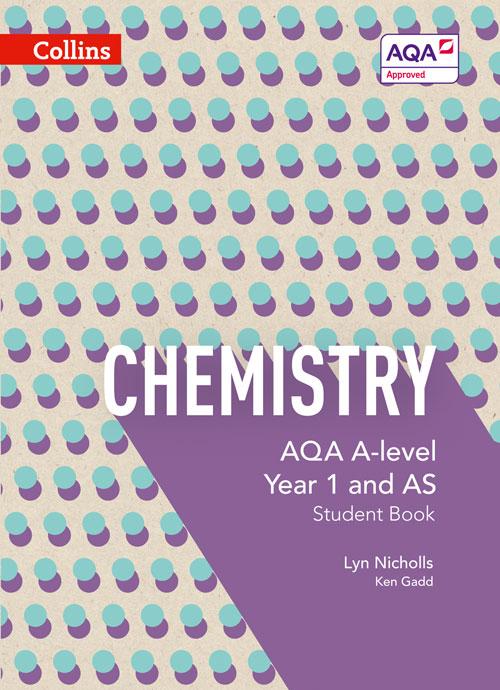

2 AMOUNT OF SUBSTANCE
PRIOR KNOWLEDGE
You read in Chapter 1 that we use relative atomic mass and relative molecular mass to compare the masses of atoms and molecules. You may already know how to use a chemical equation to describe a chemical reaction. You may have also learned how chemists use moles to count particles and you have possibly carried out some calculations using moles.
LEARNING OBJECTIVES
In this chapter, will build on these ideas and learn how amounts of chemical substances in solids, liquids, gases and solutions can be measured in moles.
(Specification 3.1.2.1,






3.1.2.5)
Ibuprofen is an anti-inflammatory medicine that was first patented in the 1960s. It is now available without prescription (over-the-counter), and is sold under several different brand names, such as Nurofen and Ibuleve. The early manufacture of ibuprofen involved a series of six different chemical reactions, but each stage generated unwanted products. This meant that there was a lot of waste, which was associated with expense and the potential for environmental harm. The process also resulted in only 40.1% of all the atoms in the reactants ending up in the ibuprofen molecules. During the 1990s, BootsTM developed an alternative process for the manufacture of ibuprofen that involved only three stages. Less waste was produced and 77.4% of atoms in the reactants ended up in the ibuprofen molecules. Scientists use the idea of atom economy to calculate percentages of waste products. You will find out more about atom economy in this chapter.

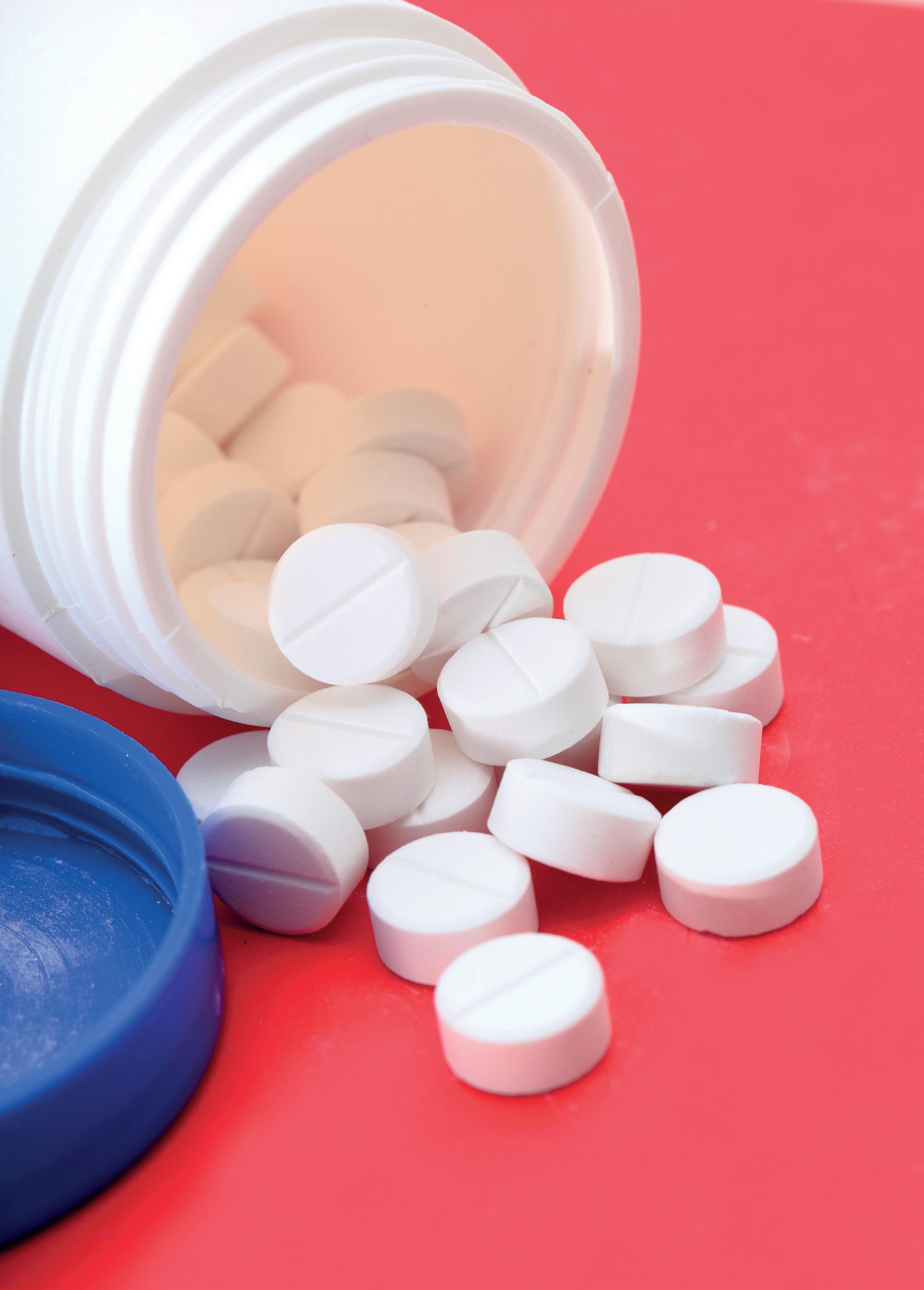
Relative masses
2.1 RELATIVE MASSES
Relative atomic mass, A r Relative atomic mass values for elements can be found on your Periodic Table.
The masses of atoms vary from 110 24 × g for hydrogen to 110 22 × g for the heavier elements. These are very small masses that are impossible to imagine. Small numbers like these also complicate calculations.
As described in Chapter 1, you can use the idea of relative atomic mass, Ar, with the mass of a carbon-12 atom as the standard, to deal with the mass of atoms.
Relative atomic mass is the average mass of an atom of an element compared with one-twelfth of the mass of an atom of carbon-12.
For an element, A r averagemassofanatomofanelement themass = 1 12 o ofoneatomofcarbon-12
You use the average mass of an element because most elements have more than one isotope. Therefore, not all the element’s atoms have the same mass.
For example, chlorine has two naturally occurring isotopes: chlorine-35 and chlorine-37. Any sample of chlorine contains 75.53% of 35 17 Cl and 24.47% of 37 17 Cl . This gives a relative atomic mass of 35.453, which is usually rounded up to 35.5.
Relative molecular mass, M r
For molecules rather than atoms, you use relative molecular mass, symbol Mr. As with Ar, Mr has no units.
Relative molecular mass (Mr) is the sum of the relative atomic masses of all the atoms in a molecule.
You can also define relative molecular mass as:
Mr averagemassofonemoleculeofan elementorcom = p pound themassofoneatomofcarbon- 1 12 12
Worked example 1
To calculate the relative molecular mass of ammonia, NH3:
Step 1 Look up the relative atomic mass values for each atom in the formula: nitrogen = 14 ; hydrogen = 1
Step 2 Add up the masses of all the atoms in the molecule:
nitrogen: 11414 ×= ; hydrogen: 313 ×= Mr of ammonia = 17 .
QUESTIONS
1. Calculate the relative molecular mass of:
a. sulfur dioxide, SO2
b. ethane, C2H6
c. ethanol, C2H5OH
d. phosphorus(V) chloride, PCl5
e. glucose, C6H12O6
(Ar: H 1; C 12; O 16; P 31; S 32; Cl 35.5)
Relative formula mass, Mf
Relative molecular mass applies to molecules, which are covalently bonded. Many of the formulae that you meet in this course have giant structures with ionic or covalent bonding. Sodium chloride has ionic bonding and consists of a large number of sodium ions and an equally large number of chloride ions held together in a lattice by electrostatic charges. The formula NaCl is called the formula unit and shows the ratio of each type of atom in the lattice. Silicon dioxide, SiO2, has covalent bonding and a macromolecular structure (a giant covalent structure). The formula SiO2 is the formula unit. The mass of the formula unit is called the relative formula mass. It has the symbol Mf, though you may find that Mr is still used. It is calculated in the same way as the relative molecular mass. Many ionic and molecular compounds have brackets in their formulae.
You can also define relative formula mass as:
Mf averagemassofoneformulaunitofanelementor = c compound themassofoneatomofcarbon- 1 12 12
Worked example 2
To find the relative formula mass of ammonium sulfate, NHSO: 4 2 4 ()
Step 1 Look up the relative atomic mass value for each atom in the formula: nitrogen = 14 ; hydrogen = 1 ; sulfur = 32; oxygen = 16
Step 2 Add up the masses of the atoms in the formula: nitrogen: 21428 ×= ; hydrogen: 818 ×= ; sulfur: 13232 ×= ; oxygen: 41664 ×= . Total: 132
The relative formula mass of ammonium sulfate is 132.
Remember, atoms (or ions) inside a bracket are multiplied by the subscript number after the bracket.
QUESTIONS
2. Calculate Mf for the following:
a. MgBr2
b. Ca () OH 2
c. Al 3() NO3
d. Al2 3() SO4
e. Ca 2() CH3COO
(Ar: H 1; C 12; N 14; O 16; Mg 24; Al 27; S 32; Ca 40; Br 80)
KEY IDEAS
› Relative atomic mass is the average mass of an atom of an element compared with 1 12 the mass of one atom of carbon-12.
› Relative molecular mass is the sum of the relative atomic masses of all the atoms in a molecule.
› Relative formula mass is the sum of the atoms that make a formula unit of a compound with a giant structure.
2.2 THE MOLE AND THE AVOGADRO CONSTANT
When ammonia is manufactured, the amount of product that can be generated is calculated from the amounts of reactants (nitrogen and hydrogen) that are used.
From the equation for the reaction you know that three hydrogen molecules react with one nitrogen molecule:
32223 HgNgNHg () + () → ()
However, you cannot count out molecules to get reactants in the right proportion. Chemists count the number of particles in moles, for which we
use the symbol mol. A mole of particles contains 60231023 . × particles. For ammonia manufacturers, a mole of hydrogen refers to 60231023 . × molecules of hydrogen and a mole of nitrogen refers to 60231023 × molecules of nitrogen.
But a mole can be 60231023 × particles of anything –atoms, molecules, ions, electrons. It is important to state the type of particles, for example, a mole of chlorine atoms, Cl, or a mole of chlorine molecules, Cl2. A mole of chlorine molecules has twice the mass of a mole of chlorine atoms.
Since atoms have different masses, moles of atoms will have different masses. The mass of a mole of atoms of an element, in grams, is the relative atomic mass in grams.
The standard for relative atomic masses is the carbon-12 isotope of carbon. It is assigned the value 12.000 and all other atoms are measured relative to this.
One mole of carbon-12 atoms 60231023 . × () atoms has a mass of 12.000 g.
Two moles of carbon-12 atoms 12051024 × () atoms have a mass of 24.000 g.
And so on.
The number 60231023 . × is the Avogadro constant (symbol L). It was named after Amedeo Avogadro, a 19th-century Italian lawyer who was interested in mathematics and physics. He hypothesised that, at the same temperature and pressure, equal volumes of different gases contain the same numbers of particles. However, he did not calculate the number of particles in a mole. The first person to do this was an Austrian school teacher called Josef Loschmidt, in 1825.
Moles and relative mass
The relative atomic mass of carbon-12 is 12 and the relative atomic mass of magnesium-24 is 24. Therefore:
› one magnesium-24 atom has twice the mass of one carbon-12 atom
› 60231023 × magnesium atoms have twice the mass of 60231023 × carbon atoms
› 1 mole of magnesium-24 atoms has twice the mass of 1 mole of carbon-12 atoms
› 1 mole of carbon-12 atoms weighs 12 grams, 1 mole of magnesium-24 atoms weighs 24 grams.
The mass of a mole of molecules, in grams, is the relative molecular mass in grams, and the mass of a mole of formula units in grams is the relative formula mass in grams.
Earlier you learned that relative atomic mass is the average mass of an atom of an element compared with one-twelfth of the mass of an atom of carbon-12. Chlorine, for example, has two isotopes: chlorine-35 and chlorine-37. Taking into account their relative abundances, the relative atomic mass for chlorine is 35.5. It is these average values that we use in calculations. So, we can say that:
› 1 mole of carbon dioxide, CO2, molecules has a mass of 1221644 +×() = g
› 0.1 mole of carbon dioxide molecules has a mass of 4.4 g
› 1 mole of sodium chloride, NaCl, has a mass of 23355585 +=..g
› 5 moles of sodium chloride has a mass of 58552925 ×= g
Calculations involving the Avogadro constant
We can use the Avogadro constant to find the number of atoms or molecules in an amount of moles.
Worked example 3
(MS 0.1)
Helium is a monatomic gas, He. How many atoms are in 0.200 mol helium gas?
Step 1 1 mol helium contains 60231023 × atoms
Step 2 0.200 mol helium contains 0260231023 ..×× 12051023 . =× atoms
Carbon dioxide exists as molecules, CO2. How many molecules are in 0.125 mol carbon dioxide?
Step 1 1 mol carbon dioxide contains 60231023 × molecules
Step 2 0.125 mol carbon dioxide contains 0125602310752910 2322××=× molecules
QUESTIONS
3. How many atoms are there in:
a. 3.000 mol aluminium
b. 0.0100 mol argon
The mole and the avogadro constant
c. 0.2750 mol chromium
d. 1.750 mol lithium
e. 0.007 mol calcium?
4. How many molecules are there in:
a. 5.00 mol water
b. 0.725 mol sulfur dioxide
c. 20 mol oxygen
d. 0.025 mol ammonia
e. 0.001 mol hydrogen chloride?
Converting mass to moles
You will need to be able to convert the mass of a substance into the number of moles and vice versa.
To convert the mass of an element (consisting of atoms) to moles, you can use the formula:
massnumberofmoles r =× A
To convert the mass of a substance consisting of molecules to moles, simply substitute Mr for Ar
You may find the triangle in Figure 1 useful, wheremassmolesmolesmassand rr=×=MM ,÷ mass r = M ÷mmoles.
Worked example 4
(MS 2.1 and 2.2)
How many moles are there in 414 g of lead?
Step 1 Ar lead = 207
Step 2 moles = 414 207 = 2mol
How many moles are there in 1 kg of glucose, CHO6126 ?
Step 1
Mr glucose =×() +×() +×() = 612121616180
11000kgg =
Step 2 moles = 1000 180 = 556.mol
Converting moles to mass
For elements consisting of atoms: massgmolesrelativeatomicmass r () =× () A
For substances consisting of molecules or formula units:
massg() = molesrelativemolecularorformulamas × s rM ()
Worked example 5
(MS 2.1 and 2.2)
What is the mass in grams of 2 moles of argon gas? (Ar: Ar 40)
massg() =×240 = 80g
What is the mass in grams of 2.5 moles of ethanol, C2H5OH?
Step 1 Mr ethanol =×() +×() ++= 2125116146
Step 2 massg() =×2546 = 115g
QUESTIONS
5. Calculate the number of moles of:
a. atoms in 6.00 g magnesium
b. formula units in 60.0 g calcium carbonate, CaCO3
c. molecules in 109.5 g hydrogen chloride, HCl
d. formula units in 303 g potassium nitrate, KNO3
e. formula units in 26.5 g anhydrous sodium carbonate, Na2CO3
f. molecules in 4.00 g hydrogen gas
g. atoms in 4.00 g hydrogen gas
h. atoms in 336 g iron
i. atoms in 27.0 kg aluminium
j. molecules in 9.80 g sulfuric acid, H2SO4
6. Calculate the mass in grams of:
a. 0.500 mol chromium
b. 0.200 mol bromine atoms
c. 10.0 mol lead
d. 0.100 mol zinc(II) chloride, ZnCl2
e. 0.500 mol potassium hydroxide, KOH
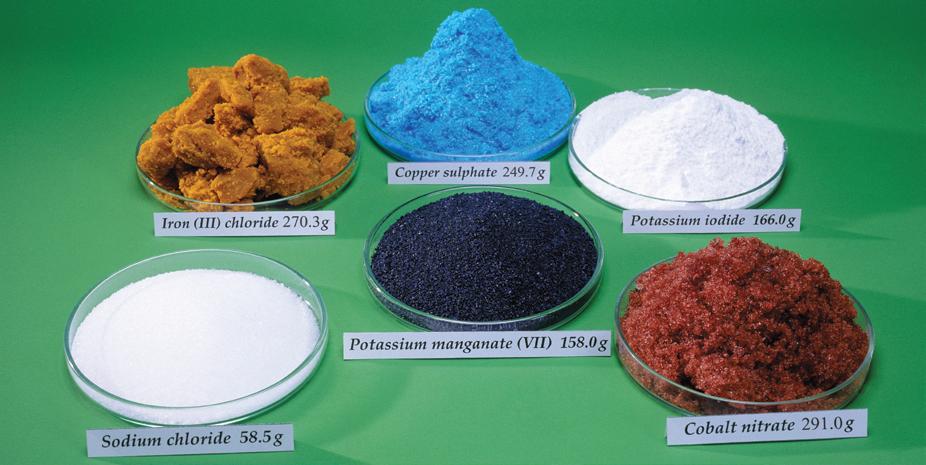
f. 0.010 mol ethanol, C2H5OH
g. 0.001 mol sulfuric acid
h. 5.00 mol nitrogen atoms
i. 5.00 mol nitrogen molecules
j. 0.025 mol sodium hydroxide, NaOH
More calculations using the Avogadro constant
We can use the Avogadro constant to work out the number of atoms or molecules in the mass of a substance (Figure 2).
Worked example 6
(MS 0.1, 2.1and 2.2)
How many atoms are in 19.70 g gold (Au)?
Step 1: convert the mass to moles. (Ar: Au 197)
1970 1970 197 ggoldmolgold = = 010.mol
Step 2: 0100160231023 ...molcontainsatoms ×× =×60231022.atoms
How many molecules are in 3.910 g ammonia?
Step 1: convert mass to moles. (Ar: H 1; N 14)
Mr NH3 143117=+×() = 3910 3910 17 33 . gNHmolNH = = 0230.mol
Step 2: 02361023 .(.) molcontains 0.23023×× molecules =×13851023.molecules
Figure 2 The photograph shows 1 mole of different compounds. They have different masses, but they each contain 6.023 × 1023 formula units.You may find the diagram in Figure 3 useful when doing calculations involving the Avogadro constant.
divide by Ar or Mr
The mole and the avogadro constant
Remember, if you are given a mass in kilograms, you will need to convert it to grams first.
multiply by the Avogadro constant (6.023 x 10 23)
QUESTIONS
7. How many atoms are there in:
a. 0.040 g helium
b. 2.30 g sodium
c. 0.054 g aluminium
d. 2.10 g lithium
e. 0.238 g uranium?
multiply by Ar or Mr
divide by the Avogadro constant (6.023 x 10 23)
8. How many molecules are there in:
a. 4.00 g oxygen gas
b. 1.80 g water
c. 0.014 g carbon monoxide
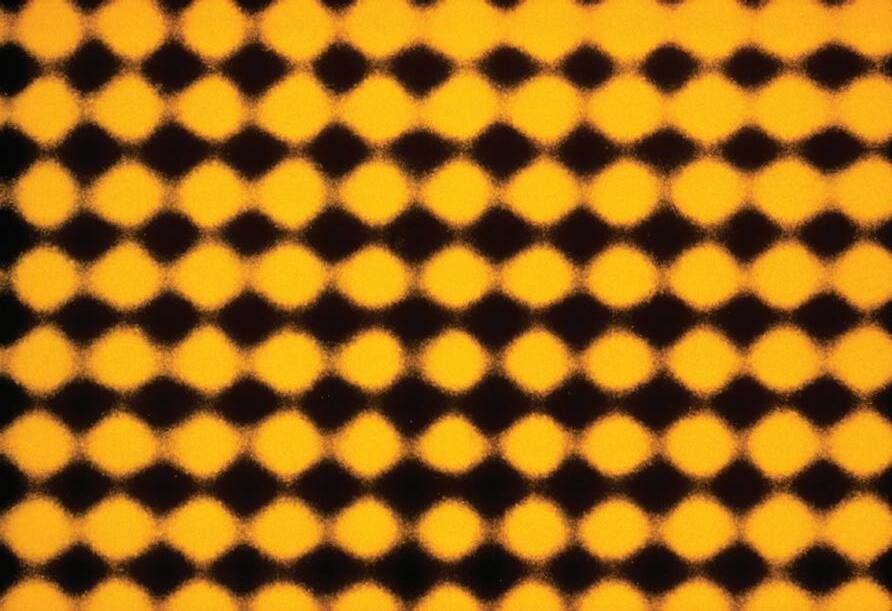
d. 0.335 g chlorine gas
e. 2.00 kg water?
(Ar: H 1; He 4; Li 6.9; C 12; O 16; Na 23.0; Al 27.0; Cl 35.5; U 238.0)
ASSIGNMENT 1: HOW MANY ATOMS ARE THERE IN THE WORLD?
(MS 0.0, 0.1, 0.2, 0.4; PS 1.1. 1.2, 3.2)
The world is made up of atoms too numerous to count, but you can estimate the number of atoms if you know the mass of the Earth. This is estimated to be 5 980 000 000 000 000 000 000 000 000 grams or, put in standard form, 5981027 g.
All atoms are tiny (see Figure A1), but atoms of different elements have different masses. Table A1 gives the percentage abundance of the most common types of atom that make up the Earth. Most percentage abundance figures for elements in the Earth only include the amount of element found in the Earth’s crust. So, as we do not know exactly what is in the centre of the Earth, a bit of estimating based on some good scientific theories is needed.
Table A1 also includes the mass of a mole of atoms of each element. This is the relative atomic mass of the element in grams. Moles are used to count particles. One mole contains 023 1023 × particles.
Figure A1 An image of gold atoms obtained using scanning tunnelling microscopy. Gold atoms are about 0.1441 nm in diameter. That is 1.441 × 10−10 mElementMass of 1 mole/gPercentage of the Earth/%Mass in the Earth/gNumber of atoms
Questions
A1. If the Earth has a mass of 5981027 g , what is the mass of iron in the Earth?
A2. How many moles of iron are in the Earth? [Ar: Fe 55.8]
A3. If one mole of particles contains 6 023 1023 × particles, how many iron atoms are there in the Earth?
2.3 THE IDEAL GAS EQUATION
Measuring the mass of a gas is not easy. Gases are usually measured by volume, but the volume of a gas depends upon its temperature and pressure. So, to find the mass of a gas after measuring its volume, you need to understand the way that gases change in volume when temperature and pressure change. Each gas behaves very slightly differently compared with other gases but, for most practical purposes, the differences are small enough to assume that gases all behave like an imaginary ‘ideal gas’.
An ideal gas has a number of assumed properties:
› It is made up of identical particles in continuous random motion.
› The particles can be thought of as point-like; with position but with zero volume (which means that the volume of the gas particles is taken to be zero).
› The particles do not react when they collide.
› Collisions between particles are perfectly elastic –the total kinetic energy (energy of motion) of the
Stretch and challenge
A4. Repeat the steps in questions A1, A2 and A3 for the other elements in the table and calculate the total number of atoms in the Earth.
particles after a collision is the same as that before the collision.
› The particles have no intermolecular forces, meaning that they do not attract or repel each other. (You will find out more about intermolecular forces in Chapter 3.)
As shown in Figure 4, no real gas follows this model exactly. In an ideal gas there are no intermolecular forces, so the particles are not attracted to each other. In a real gas, attractive intermolecular forces divert the paths of particles. These forces explain why, under the right conditions, gases can be liquefied.
Some gases do behave like an ideal gas over a limited range of temperatures and pressures. Hydrogen, nitrogen, oxygen and the inert (noble) gases behave most like ideal gases.
The effect of pressure
Robert Boyle was one of the first chemists to study the behaviour of gases under different conditions. He noticed that when he kept the number of moles of gas and the temperature constant, but increased the
instant elastic collision collision not elastic
close particles interact
There are no intermolecular forces, so the particles are not attracted to each other
Figure 4 Movement of particles in an ideal gas and a real gas
pressure on the gas, then its volume became smaller. In 1662, based on this evidence, he stated:
At constant temperature T, the volume V of a fixed mass of gas is inversely proportional to the pressure p applied to it.
When this theory proved generally to be true, it became known as Boyle’s law. You can write it mathematically as: p1 V α
when T and the mass of gas are constant, which is the same as:
pV×= constant when T and the mass of gas are constant.
The effect of temperature
About one hundred years after Robert Boyle made his conclusions, Frenchman Jacques Charles was studying during a period when ballooning was all the rage in France. Balloons were initially filled with hydrogen. Since the density of hydrogen was less than that of air, balloons filled with enough hydrogen floated up from the ground. But disastrous fires, exemplified by the Hindenburg disaster (Figure 5), put an end to the use of hydrogen. Ballons were subsequently filled with air that was heated to reduce its density. As soon as the total mass of the balloon, passengers and air in the balloon was less than that of the air displaced, the balloon could rise into the air. This is the method that is still used today (Figure 6).

Charles was looking at the effect of changing the temperature of gas and measuring the resulting
Attractive intermolecular forces divert the paths of particles
changes in volume. As temperature was increased, the gases expanded because their molecules moved faster and were further apart, so their density decreased. As temperature was decreased, the gases became more dense as they contracted. The effect was the same for a wide range of gases and, in 1787, Charles published his law:
At constant pressure, the volume of a fixed mass of gas is proportional to its temperature.
VT =× constant
when p and the mass of gas are constant.
The equation for Charles’s law implies that, at constant pressure, as the temperature goes down, the volume of any sample of gas decreases until, at
Figure 5 The Hindenburg was the largest airship that used a hydrogen-filled balloon. In 1937, it burst into flames when trying to dock at the end of its first North American transatlantic journey. This marked the end of the airship era.a certain very low temperature, the volume becomes zero. Plotting the volumes of most gases against temperature and extrapolating (Figure 7) produces a surprising result – they would all reach zero volume at the same temperature, −°27315.C , which is known as the absolute zero temperature.
At this temperature, the atoms or molecules are assumed to have no kinetic energy, to have ceased moving and colliding, and to be so close together as to occupy a negligible volume. Of course, at normal pressures, the gases would be solids at −°27315.C , which is why you have to extrapolate to obtain the value (Figure 7). On the Kelvin scale, this temperature is 0 kelvin (0 K), at which an ideal gas is assumed to occupy zero volume. In your calculations using gas laws, always remember to state temperatures in kelvin, converting degrees celsius to kelvin by adding 273.
Combining Boyle’s law and Charles’s law
Boyle’s law and Charles’s law can be combined into a single ideal gas equation, but one more piece of information is needed, which was discovered by the Italian Amedeo Avogadro. He found that:
Equal volumes of all gases at the same pressure and temperature contain the same number of particles. This means that the molar volume, which is the volume occupied by one mole of a gas, is the same for all gases at the same temperature and pressure. For example, Figure 8 shows that the volume of a mole of different gases at 2982524KCisdm3 ° () .
As a consequence, the volume of a gas is proportional to the number of moles of the gas present when the pressure and temperature are constant. Thus: Vn =×
when p and T are constant and n is the number of moles of the gas.
The ideal gas equation combines all the equations above for gases into one equation:
pVnRT =
where:
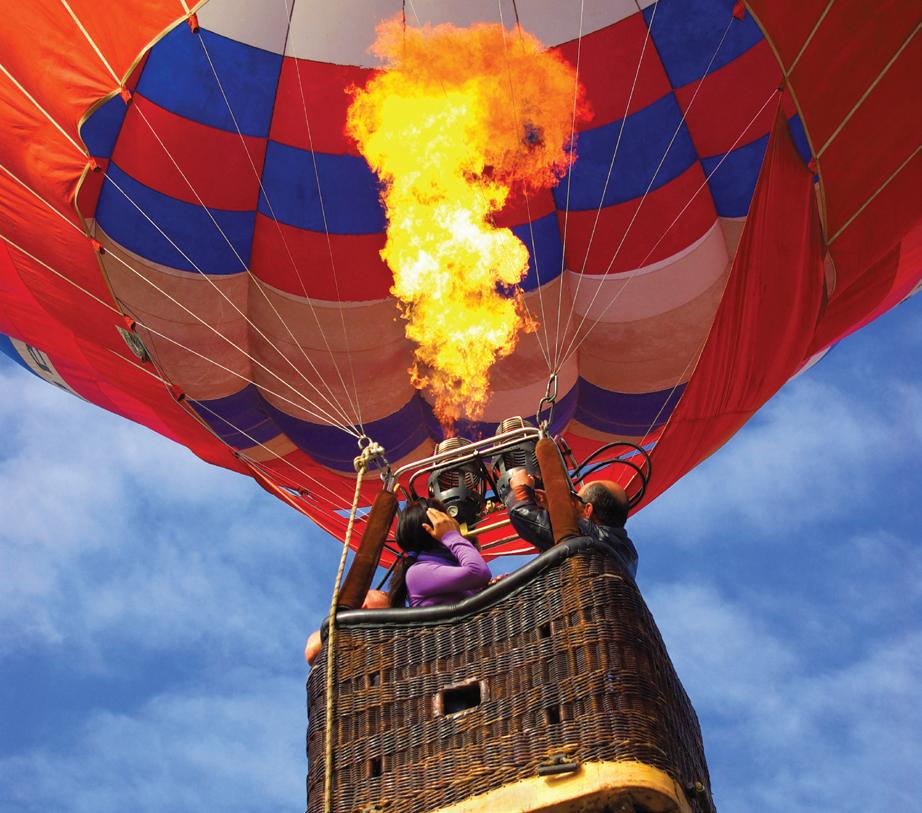
p = ()pressureofthegasinpascalsPa
V = volumeofthegasinm3
n = numberofmolesofthegaseousparticles
R = ( ) molargasconstantJKmol 831 11
T = ()temperatureinkelvinK
Determining the molar gas constant
The apparatus shown in Figure 9 can be used to calculate the values for all the quantities in the ideal gas equation that are needed to calculate R. It includes a gas syringe with a friction-free plunger, which allows gas in the syringe to reach atmospheric pressure.
changes to a gas and its volume in the large syringe is measured.
Some sample results from an experiment to find the Mr of hexane are given. You can use these data to calculate the Mr of hexane.
volumeofaircm = 10 3
volumeofvapourair100cm += 3
massofsample 2.59g =
temperature87C =°
pressurekPa = 100 [this is a pressure of 1 atmosphere (atm)]
70 8
gas syringe filling with gas gas cylinder containing, for example, butane, sulfur dioxide or chlorine top-pan balance
Figure 9 This apparatus is used to calculate the molar gas constant, R, used in the ideal gas equation. (Drawing not to scale.)
The syringe is filled several times from the cylinder. This gives a sum of volumes = V
The total mass of gas lost from the cylinder is recorded and the number of moles calculated = n
The temperature is recorded = T
The atmospheric pressure is recorded = p
Then the gas constant is calculated from: RpV nT =
You need to be able to use the ideal gas equation to carry out calculations made using this apparatus, and other examples.
Finding the M r of a volatile liquid
The apparatus used to find Mr of a volatile liquid this is shown in Figure 10. A small syringe is used to inject a known mass of the volatile liquid into a large gas syringe. At the recorded temperature, the liquid
(a) Mass of volatile liquid is measured
First, convert the measurements to SI units (as in the gas equation):
volumeofsamplecm =−10010 3
= 90 cm3
=×9010 63 m
temperature3K =+8727
= 360K
pressurePa = 100000
Rearrange the ideal gas equation to give Mr as the subject:
numberofmoles massg r
= () M
pVmRT M = r
MmRT pV r =
Insert values into the ideal gas equation:
Mr = ×× ×× 259831360
1000009010 6 ..
Mr = 86
gas syringe
hypodermic
syringe
rubber seal
(b) Volume of gas produced when liquid is vaporised is measured top-pan balance
evaporating liquid
Figure 10 Apparatus to find the Mr of a volatile liquid
heating element
Remember that the answer can only contain two significant figures because the volume of the sample is given as 90 cm3. Do not round up or down until the end of the calculation because you may lose accuracy.
Calculating moles from gas volume
Worked example 7
(MS 2.1, 2.2, 2.3, and 2.4)
How many moles of oxygen are there in 500 cm3 of gas at 25 °C and 100 KPa?
Step 1 Convert the units to the units of the ideal gas equation:
p ==100100000kPaPa
V == × 5005001036 3 cm m
T ==25298 °CK
Step 2 Rewrite the ideal gas equation to make n the subject:
npV RT =
Step 3 Insert the values:
n = ×× × 10550010 831 298 6
molesof oxygenmol = 0 0200
Calculating the volume of a reactant gas and the mass of a gas product
Worked example 8
(MS 2.1, 2.2, 2.3, and 2.4)
Methane reacts with oxygen to produce carbon dioxide and water. Calculate the volume of oxygen needed to react with 20 dm3 methane, and the mass of carbon dioxide produced at 120 kPa and 30 °C.
The equation for the reaction is:
CH g2Og CO gH Ol 42 22 2 () + () → () + ()
Step 1 The equation shows that one mole of methane reacts with two moles of oxygen to give one mole of carbon dioxide.
From Avogadro’s rule, at constant temperature and pressure, 20 dm3 of methane therefore requires 40 dm3 oxygen for the reaction.
The volume of carbon dioxide produced is 20 dm3
Step 2 To find the mass of 20 3 2 dm CO , first use the ideal gas equation to find the number of moles. Using npV RT = , insert the values converted to the correct units:
n = ×× × × 1201002010 831 303 3 .
= 0 953 .mol
The reaction produces 0.95 mol of carbon dioxide.
Step 3 Convert mass (g) into moles: mass gmoles r () =× M
=× 0 95344
= 41 9 .g
The mass of carbon dioxide produced in the reaction = 41 9 .g.
Calculating the volume of gas produced in a reaction involving a non-gas reactant
Worked example 9
(MS 2.1, 2.2, 2.3, and 2.4)
When potassium nitrate is heated, it gives off oxygen and becomes potassium nitrite. Calculate the volume, in dm3, of oxygen produced from 345 g potassium nitrate at 38 ϒC and 100 kPa.
The equation for the reaction is:
2232 2 KNOs KNOs Og () → () + ()
Step 1 Work out the number of moles in 345 g of potassium nitrate:
MA fr KNO: KN O 3 101391416 = () ;; MA fr KNO: KN O 3 101 391416 = () ;;
molesKNO mass 3 = Mf = 345 101 = 34 2. moles
Step 2 From the reaction equation, calculate the moles of O2:
342053421.71moles mole3 sKNOproducesmolesO2
×= 342053421.71moles mole3 sKNOproducesmolesO2
×=
Step 3 Work out the temperature in kelvin:
T =+ = 38 273 311 K
Step 4 Write the ideal gas equation, making V the subject, and insert the values:
VnRT p =
V = ×× × 1718 31 311 100 103 ..
= 0 0442 3 2 .m O
The volume of oxygen produced is 44 dm3 .
QUESTIONS
9. a. Convert these temperatures into kelvin:
i. 25 °C
ii. 250 °C
iii. 78 °C
b. What is the volume, in m3, of 5 mol of oxygen gas at 25 °C and 100 kPa?
c. What volume, in dm3, of hydrogen gas is produced when 19.5 g zinc metal dissolves in excess hydrochloric acid at 30 °C and 100 kPa?
d. A fairground balloon is filled with cm 1000 3 of helium gas. The temperature is 25 °C and the pressure is 100 kPa. How many moles of gas does the balloon contain?
KEY IDEAS
› Theories and equations about the behaviour of gases assume that all gases are ideal gases.
› Ideal gases have point-like particles in random motion. The particles do not react on collision, undergo elastic collisions and there are no intermolecular forces between them.
› The ideal gas equation is pVnRT = , where pV = () = () pressure Pa volume ,,ma 3 () ma n = mount mol , RT == molar gas constant,t RT () ,t== emperature K
2.4 EMPIRICAL AND MOLECULAR FORMULAE
Remember:
› The empirical formula is the simplest whole number ratio of atoms of each element that are in a compound.
› The chemical formula (molecular formula or formula unit) is the actual number of atoms of each element used to make a molecule of formula unit.
When chemists need to find the composition of a compound, they measure the mass of each element in that compound. They use this information to work out the empirical formula of the compound. The empirical formula gives the simplest ratio of atoms of each element present in the compound. For example, the molecular formula of ethane is CH26 , but it has the empirical formula CH3 , because the simplest whole number ratio of carbon to hydrogen is 1:3.
As an example of calculating an empirical formula, consider a compound that was found to contain 40% by mass of calcium, 12% by mass of carbon and 48% by mass of oxygen. From these figures, you can calculate that 100 g of the compound would contain 40 g calcium, 12 g carbon and 48 g oxygen. If you convert these masses to amounts in moles, you will know the ratio of each element (Table 1).
ratio of elements 1:1:3
Table 1
If the substance has a lattice structure (either bonded covalently or ionically), the formula unit shows the ratio of atoms of each element in the substance. For example, calcium carbonate, CaCO3, consists of ions held in a giant structure, as shown in Figure 11. The formula unit is CaCO3 , showing that it is made from one calcium atom, one carbon atom and three oxygen atoms.
The ratio of atoms in a chemical formula (molecular formula or formula unit) stays the same. Therefore, one molecule of CO2 is made from one atom of carbon and two atoms of oxygen, and 100 molecules
of CO2 are made from 100 atoms of carbon and 200 atoms of oxygen.
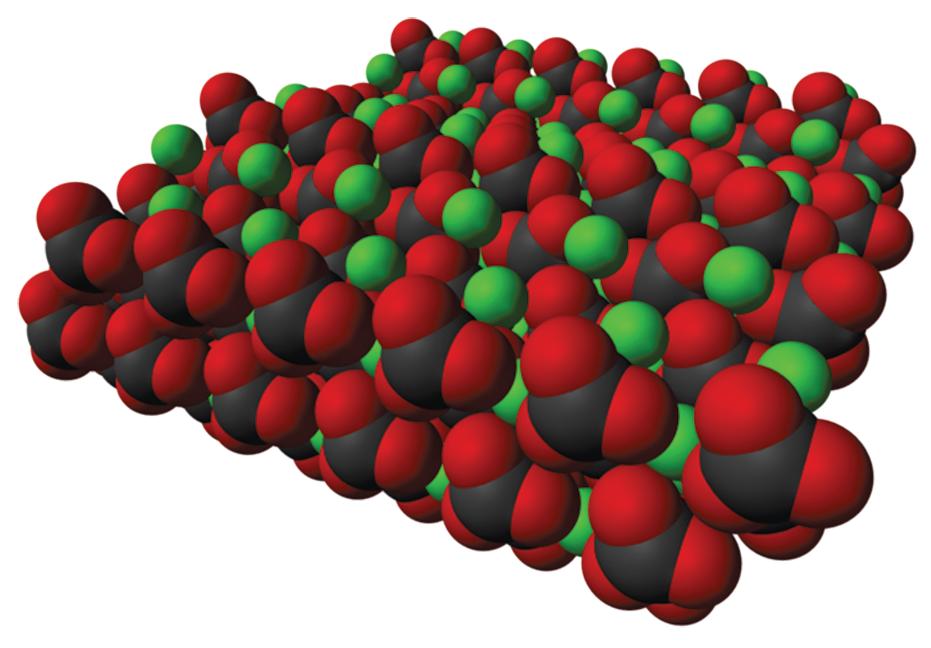
Since you can count the number of particles in moles: one mole of CO2 is made from one mole of carbon atoms and two moles of oxygen atoms.
Calculating a molecular formula
Worked example 10
(MS 0.2)
An investigation to identify a carbohydrate found that it contained 0.34 g carbon, 0.057 g hydrogen and 0.46 g oxygen. Find its empirical formula.
Step 1 Note that the mass of each element is given in the question, rather than the percentage composition. Treat this in exactly the same way as described earlier. You may need some common sense to sort out the whole-number ratio (Table 2).
The empirical formula is CHO 2
Step 2 To find the molecular formula, you need to know the relative molecular mass.
If the Mr of this carbohydrate is 180, then to calculate the molecular formula you first find the Mr of the empirical formula:
Mr CHO 2 122116=+×() +
= 30
Step 3 Since the Mr of the carbohydrate is 180, if you divide 30 into 180, the answer will show how many times you need to multiply the empirical formula to give the molecular formula:
QUESTIONS
10. a. Find the empirical formula of a compound containing 84 g magnesium and 56 g oxygen.
b. 3.36 g of iron combine with 1.44 g of oxygen to form an oxide of iron. What is its empirical formula?
c. A compound contains, by mass, 20.14% iron, 11.51% sulfur, 63.31% oxygen and 5.04% hydrogen. Find its empirical formula.
d. A hydrocarbon contains 82.8% by mass of carbon. Find its empirical formula. (Hint: what types of atoms are hydrocarbons made from?)
e. Another hydrocarbon has a relative molecular mass of 28 and contains 85.7% by mass of carbon and 14.3% by mass of hydrogen. Calculate its empirical formula and its molecular formula.
KEY IDEAS
› A mole contains 6 023 1023 × particles.
› The empirical formula is the simplest whole number ratio of atoms of each element used to make a compound.
› The molecular formula is the actual number of atoms of each element used to make a molecule.
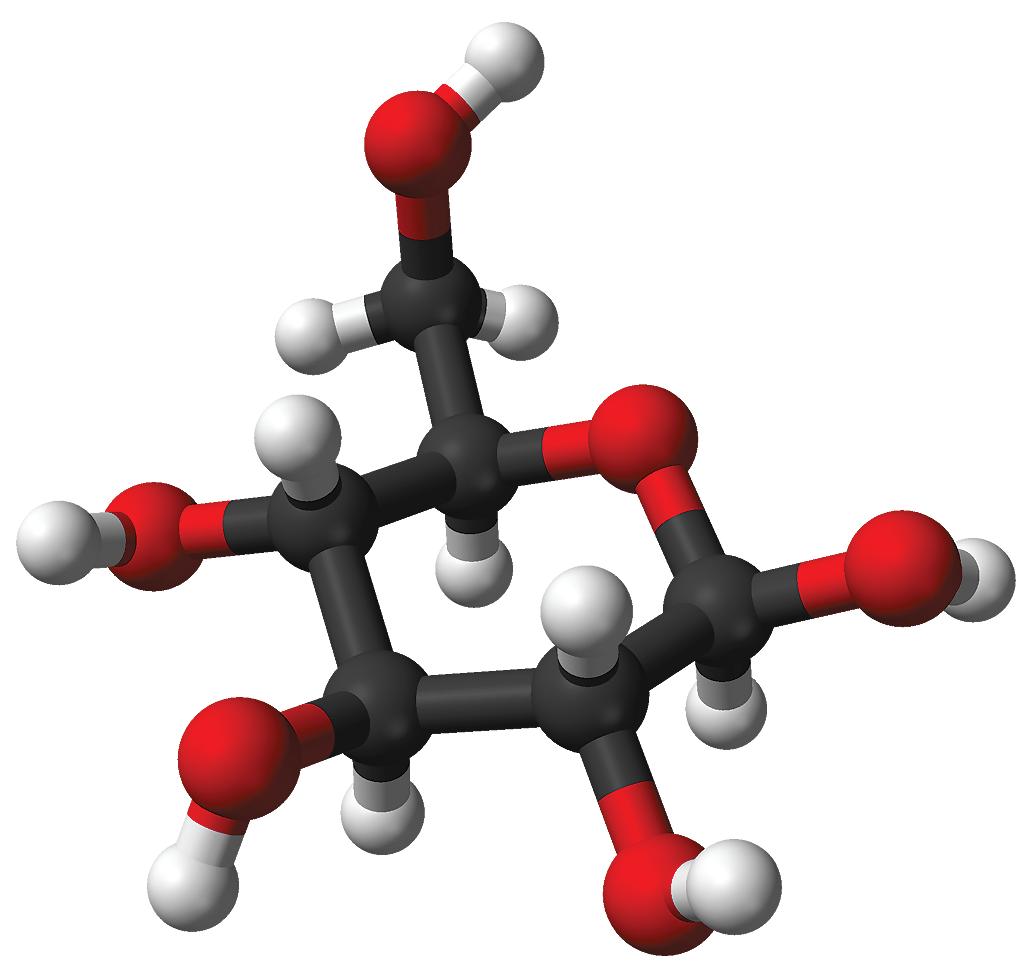
› The chemical formula of an element or a compound with a giant structure is the number of atoms of each element used to make a formula unit.
2.5 CHEMICAL EQUATIONS
Balancing chemical equations
A chemical equation is a shorthand way of writing a chemical reaction. The equation uses chemical formulae for the reactants and the products. Formulae use letter symbols to represent the elements and numbers to show how many atoms of each element are involved.
A chemical equation can also include the state of reactants and products:
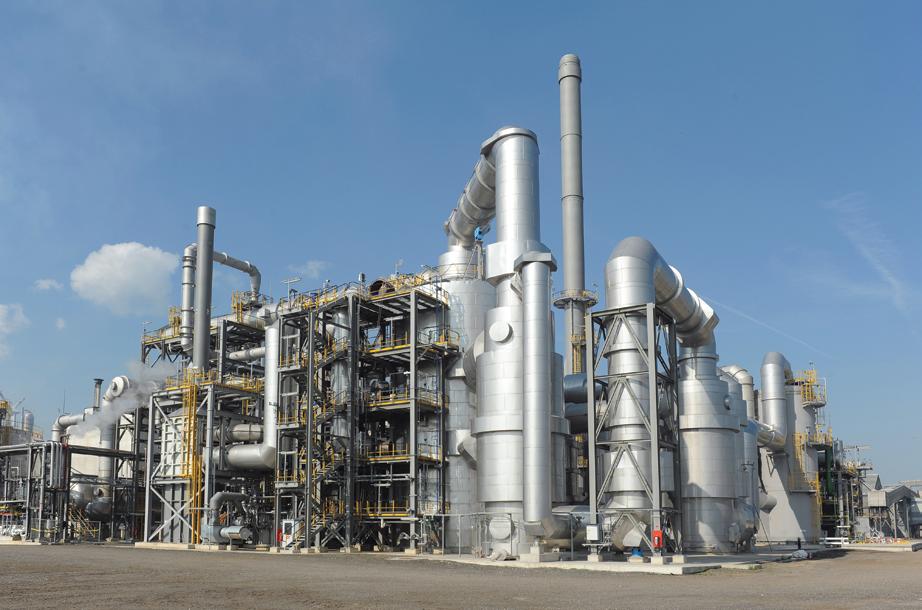
(s) means the solid state
(l) means the liquid state
(g) means the gaseous state
(aq) means aqueous, that is, in aqueous (dissolved in water) solution
As an example, sulfur burns in oxygen to produce sulfur dioxide. This is how you write the reaction using chemical formulae:
reactants product
SsOgSOg () + () → () 22
A chemical equation must balance. This means there must be the same number of each type of atom on both sides of the arrow. In this example, there is one sulfur atom on the left and one sulfur atom on the right. There are two oxygen atoms on the left and two oxygen atoms on the right. So, the equation is balanced. We call it a balanced equation.
Sulfur dioxide reacts with oxygen to produce sulfur trioxide. You could use chemical formulae to write the reaction like this:
SOgOgSOg 223 () + () → ()
Is this equation balanced? There is one sulfur atom on the left and one on the right. But there are four oxygen atoms on the left and only three on the right. So, the equation needs to be altered so that it is balanced.
An SO2 molecule is made from one S atom and two O atoms. An SO3 molecule is made from one S atom and three O atoms. So, one extra O atom is needed to make SO3 rather than SO2. One oxygen molecule is made from enough oxygen atoms to react with two molecules of sulfur dioxide and produce two molecules of sulfur trioxide. So, we can now write a balanced equation:
2SOgOgSOg 223 2 () + () → ()
Figure 12 Model of a glucose molecule, which has the empirical formula CH2O. The molecular formula is C6H12O6. The grey spheres represent carbon, the white are hydrogen and the red are oxygen atoms.This is a very simple equation. Others are more complicated, but the basic procedure is the same. Take it step by step and you should have no problems. Balancing chemical equations is trial and error. With each step you take, you need to check whether you need more steps to rebalance the equation. Worked example 11 shows how to balance the equation for ammonia burning in oxygen.
Worked example 11
NH ONOH O 32 22 +→ +
Look at nitrogen. There is one atom on either side, so the nitrogen balances.
Look at hydrogen. There are three atoms on the left and two on the right. Use two ammonia molecules and three water molecules to give six hydrogen atoms on each side:
2NHO NO HO 32 22 3 +→ +
Now the nitrogen is unbalanced, so double the nitrogen dioxide [nitrogen(IV) oxide] on the right:
2NHO NO HO 32 2322 +→ +
Now check on the oxygen. There are two atoms on the left and seven on the right. First, double both sides to get even numbers:
4NHO NO HO 32 22 24 6 +→ +
The nitrogen and hydrogen are still balanced. You have 14 oxygen atoms on the right, so you need seven oxygen molecules on the left:
4NHO NO HO 32 22 74 6 +→ +
Add state symbols:
4NHg Og NO gH Og 32 22 74 6 () + () → () + ()
QUESTIONS
11. Balance these equations:
a. CH OH lO gCOg HO 25 22 2 () + () → () + () l
b. Al sNaOHaqNaAlO Hg () + () → () aq + () 33 2
c. CO gH Ol CH OaqO 22 6126 2 () + () → () + () g
d. CH gO gCOg HO 38 22 2 () + () → () + () l
e. Al sH SO lAlSOaqS () + () → () () + 24 24 3 qSOg HO () + () l 22
12. Write balanced symbol equations for these reactions, and include state symbols.
a. iron(III) chloride ammoniainwater +→ iron(III) hydroxide ammonium c + hlorid h e
b. copper(II) carbonate hydrochloric acid +→ copperIIchlori () de d carbon dioxide water ++
c. sodium hydroxide + phosphoric acid Os() HP → 34 Osodiump m hosphatew + ewater () phosphateisPO43
d. iron chlorine iron chloride +→ () III
e. copper(II) oxide sulfuric acid +→ copper(II) Isulfat a ewater +
Using chemical equations and moles
Chemical equations enable you to calculate the masses of reactants and the masses of products formed in a chemical reaction.
Look at this reaction:
CaCO sHCl aq CaCl sCOg HO l 32 22 2 ( ) + ( ) → ( ) + ( ) + ( )
To carry out the reaction without leaving a surplus of either reactant, one mole of CaCO3 is needed for every two moles of HCl. So, you can write the moles in the reaction as:
1 mol CaCO3 reacts with 2 mol HCl to produce 1mol CaCl molCOmol HO 22 2 11++
But since you can calculate the mass of a mole, you can take a given mass of calcium carbonate and work out exactly what mass of hydrochloric acid in solution reacts with it. You can also calculate the mass of each product that is made.
Calcium carbonate decomposes when it is heated in a furnace to make calcium oxide, sometimes called quicklime.The simple equation is:
CaCO sCaO 32sCOg ( ) ( ) + ( ) L
This is a reversible reaction, but if the carbon dioxide is allowed to escape, then all the calcium carbonate decomposes.
So, one mole of calcium carbonate breaks down to give one mole of calcium oxide and one mole of carbon dioxide.
Calculating the mass of product formed
Worked example 12
(MS 2.1, 2.2, 2.3 and 2.4)
How much calcium oxide could be obtained from 800 kg of calcium carbonate?
Step 1 Write a balanced equation:
CaCOsCaOsCOg32 ()() + () →
Step 2 Calculate the Mf for the calcium carbonate and calcium oxide:
(; ;) A r :CaC O 401216
Mf CaCO3 401248100=+ +=
Mf CaO =+ = 401656
Step 3 Calculate the moles of CaCO3 used: moles mass of CaCO s f
= () 3 M = × 80010 100 3 = 8000 mol
Step 4 From the equation, find the moles of calcium oxide produced:
1 mol CaCO3 produces 1 mol CaO
8000 mol CaCO3 produces 8000 mol CaO
Step 5 Convert the moles of calcium oxide into mass (g)
Mass gmoles f () =× M =×800056 = 448000 g
Mass kg = 448
Calculating reacting masses
Worked example 13
(MS 2.1, 2.2, 2.3 and 2.4)
Copper carbonate reacts with hydrochloric acid to produce copper chloride. What mass of copper chloride is made when 24.7 g copper carbonate react with excess acid?
Step 1 Write a balanced equation:
CuCO sHCl aq CuCl aq HO lCOg 32 22 2 () + () → () + () + ()
Step 2 Calculate the Mr for the substances involved in the question.
(. ;; ;) Ar :CuC OCl 35.5 63 51216
Mf CuCO3 63 51248=+ + . = 123
Mf CuCl2 63 52 35 5 =+.( .) × = 134
Step 3 Calculate the moles of CuCO3 used:
molesCuCO mass g f 3 = () M
= 24 7 123 5 . . = 02.mol
Step 4 Use the equation to find the moles of CuCl2 produced:
1132 molCuCOmol CuCl → ; 02 02 32molCuCOmol CuCl →
Mf CuCl2 63 52 35 5 134 5 =+ × () = .. .
Step 5 Convert the moles of CuCl2 into mass (g)
mass gmoles f () =× M =× 02 134 ..5
= 269.g
Percentage yield
Worked example 12 showed that 800 kg of calcium carbonate could produce 448 kg of calcium oxide. This is called the theoretical yield. The reality is that, although industries strive to achieve the maximum yield possible and make the maximum profit, it is never possible to achieve the theoretical yield.
Calcium carbonate only decomposes when the temperature is greater than 1000 °C . The reaction is also reversible, so complete decomposition depends on the carbon dioxide escaping. Some calcium oxide may be lost when transferring it from the kiln to the next stage.
The mass of product actually obtained is called the actual yield. It can only be found by actually doing the
reaction. Percentage yield is used to express how close the actual yield is to the theoretical yield.
percentageyield actualyield theoreticalyield =× × 100
Worked example 14
(MS 0.2, 2.1, 2.2, 2.3 and 2.4)
Calcium oxide is used to make cement (Figure 14). If 800 kg of calcium carbonate produced 314 kg of calcium oxide in an actual process, calculate the percentage yield.
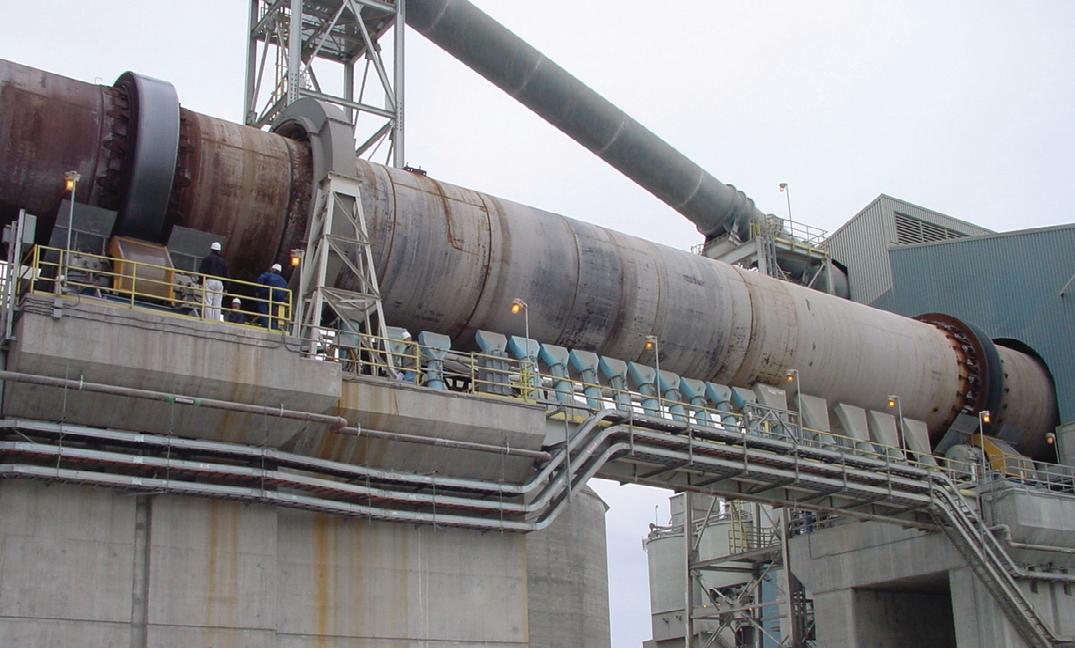
Percentage atom economy is a way to compare the maximum mass of a product that can be obtained with the mass of the reactants. It is calculated using the equation:
percentageatomeconomy = molecularmassofdesireddproduct sumofmolecularmassesforallreactants × 100
Developing chemical processes with high atom economies can have economic, ethical and environmental benefits for industry and the society it serves.
Copper can be extracted by heating copper(II) oxide with carbon, as in the equation:
22 2 CuOsCsCusCOg ( ) + ( ) → ( ) + ( )
Two moles (159 g) of copper(II) oxide react with one mole (12 g) of carbon. The reactants need to be added in these reacting quantities. Theoretically, the reaction can produce 127 g of copper from 159 g of copper oxide and 12 g of carbon. So:
percentageatomeconomy =× 127 171 100
= 74%
The reaction uses 74% of the mass of the reactants to give the product required. The remaining 26% ends up as waste or side products, assuming the percentage yield is 100%. The reality is that the yield will be lower because the percentage yield is unlikely to be 100%.
Step 1 Calculate the theoretical yield from the equation:
CaCOsCaOsCOg 32 ()() + ()
800 kg calcium carbonate can produce a theoretical yield of 448 kg calcium oxide (from the calculation in Worked example 12).
Step 2 percentageyield actualyield theoreticalyield =× × 100
= × 314 448 100%
= 700.%
Percentage atom economy
Chemists have traditionally measured the efficiency of a reaction by its percentage yield. However, this is only half the story because many atoms in the reactants are not needed in the product. They make up the waste or side products.
QUESTIONS
13. a. What theoretical yield of iron can be obtained from reacting 320 tonnes of iron(III) oxide with carbon monoxide in the blast furnace? The equation for the reaction is:
Fe O Fe CO 23 2 2 3CO 3 () s + () g () s + () g
b. If the actual yield in a. is 200 tonnes, what is the percentage yield?
c. What is the percentage atom economy of the reaction in a?
d. Sulfuric acid is reacted with calcium carbonate to produce calcium sulfate for use in making plaster. Calculate the theoretical mass of calcium sulfate that can be made from 490 tonnes of sulfuric acid.
Figure 14 In the cement kiln, calcium oxide is heated with silicon dioxide and aluminium oxide at 1400°C . Calcium sulfate is added to the produce from the kiln and the mixture is then ground to the fine grey powder you probably know as Portland cement. Cement manufacturers are actively researching ways to increase their percentage atom ecomony.e. If the actual yield is 550 tonnes of calcium sulfate, calculate the percentage yield.
f. Calculate the percentage atom economy for the reaction in d.
g. A student is extracting copper metal by displacing it from copper(II) sulfate using zinc metal. She uses 23.93 g of copper sulfate and obtains 4.76 g of copper. What is the percentage yield?
ASSIGNMENT 2: GREEN CHEMISTRY
(MS 0.2; PS 1.1, 1.2, 3.2)
The ethos of green chemistry is that the chemical industry must not adversely affect the environment so that the environment is protected now, and for future generations. A key aim is to reduce the production of waste. Taking into account the percentage atom economy of industrial reactions represents an important step towards reducing waste from industrial processes. In fact, atom economy is the key idea behind green chemistry.
Phenol is the starting point for making many products. Its formula is CH65OH H . The traditional method for manufacturing phenol used benzene, CH66 H , sulfuric acid and sodium hydroxide. The overall equation for the reaction is:
Stretch and challenge
14. Cracking can be used to produce alkenes from alkanes. Decane can be cracked to give two products:
CH CH CH 10 22 24 81 H 8 →+ H4
a. If only the alkene can be sold, what is the percentage atom ecomony?
b. If both products can be sold, what is the percentage atom ecomony?
So, 1 mol of benzene (78 g) should yield 1 mol of phenol (94 g). In practice, 1 mol of benzene yields about 77 g of phenol, which is a good percentage yield.
However, the reaction also produces 1 mol of sodium sulfite () Na SO 23 for every mole of phenol produced. At present, we do not have any uses for sodium sulfite. It creates serious problems for waste disposal, which adds to the costs.
A better method is to manufacture phenol from benzene and propene, CH CHCH 32 . The reaction also uses oxygen. The overall equation is:
CH +CH CHCH +O 66 H 32 2 () l () l () g →
CH OH + CH COCH 65 H 33 () l () l
CH COCH 33 is propanone, which is commonly called acetone. It has many uses, including as a component
of nail polish removers. So, by manufacturing phenol using an alternative reaction it is possible to generate another product that is useful, which means there is no waste.

Questions
A1. What is the percentage yield of phenol when it is manufactured from benzene, sulfuric acid and sodium hydroxide?
A2. Calculate the percentage atom economy for the production of phenol from benzene, sulfuric acid and sodium hydroxide.
A3. Calculate the percentage atom economy when phenol is manufactured using propene. Consider both products as desired.
A4. Explain why manufacturing phenol using benzene and propene may be a better method than using benzene, sulfuric acid and sodum hydroxide.
A5. How might percentage yield affect your answer to question A4?
2.6 IONIC EQUATIONS
Ionic equations provide a shorthand way to show the essential chemistry involving the ions in a reaction. They enable you to make generalisations about a reaction and to pick out the species that have lost or gained electrons.
Working from a full equation to an ionic equation
Consider how to work out the ionic equation for the reaction between hydrochloric acid and sodium hydroxide that produces sodium chloride and water.
First write out the full equation:
HClaqNaOHaqNaClaqH Ol ( ) + ( ) → ( ) + ( ) 2
Now write the equation as ions and cancel the ions that appear on both sides:
HaqClaqNaaqOHaq +−+− ( ) + ( ) + ( ) + ( ) →
NaaqCla +− ( ) + q qHOl ( ) + ( ) 2
Water molecules are covalently bonded, so they form no ions.
The ionic equation is:
HaqOHaqH Ol +− ( ) + ( ) → ( ) 2
The ions that appear unchanged on both sides of the ionic equation are cancelled out and are known as spectator ions. They are not written in the final ionic equation.
Worked example 15
Write the ionic equation for the reaction between zinc and hydrochloric acid.
Step 1 First write out the full equation:
ZnsHClaqZnClaqHg () + () → () + () 2 22
Step 2 Then write the equation as ions:
ZnsHaqClaq () + () + () → +−22
ZnaqClaq+H () + () +− 2 2 2 g ()
Hydrogen molecules are covalently bonded, so they form no ions.
Step 3 Finally, cancel out ions that appear on both sides to give the ionic equation:
ZnsHaqZnaq Hg + () + () → () + () + 2 2 2
In this reaction the zinc has been oxidised (it has lost electrons) and the hydrochloric acid has been reduced (the hydrogen has gained electrons).
QUESTIONS
15. Iron displaces silver from silver nitrate solution. The ionic equation is:
Fe Ag Fe Ag () s () aq () aq () s ++ 22 2
What is the maximum mass of silver that can be displaced using 9.52 g iron and excess silver nitrate solution? (Ar: Fe 55.8; Ag 107.9)
Calculations from ionic equations
You can also calculate amounts from ionic equations. One mole of sodium chloride has a mass of 58.5 g. This is calculated as the mass of a mole of sodium atoms plus the mass of a mole of chlorine atoms 23355 + ().g
But sodium chloride consists of sodium ions, Na+, and chloride ions, Cl .
Since the mass of the electrons lost or gained is negligible, the mass of 1 mol Na+ is taken as the same as the mass of 1 mol sodium atoms. Similarly, the mass of 1 mol Cl is taken as the same as the mass of 1 mol of chlorine atoms.
Worked example 16
(MS 0.2)
You can use an ionic equation to calculate an amount. Zinc metal reacts with copper sulfate solution to deposit copper metal. Calculate the mass of copper that can be obtained from 130 g of zinc, using excess copper sulfate.
Step 1 The chemical equation is:
ZnsCuSOaqZnSOaqCus () + () → () + () 44
Step 2 Write the equation as separate ions:
ZnsCuaqSOaq () + () + () → +−2 4 2
Znaq+SOaq ()() +−2
4 2 + ()Cus
Step 3 Write the ionic equation:
ZnsCuaqZnaqCus () + () → () + () ++ 22
Step 4 From the ionic equation:
1 mol zinc atoms → 1 mol copper atoms so, 65 g ZngCu → 635 .
and, 130128gZngCu →
You will meet many ionic equations in this course.
2.7 REACTIONS IN SOLUTIONS
A solution contains a solute dissolved in a solvent. Water and ethanol are common solvents. The solute dissolved in the solvent can be solid, liquid or gas. Solutions in the home are commonplace. In fizzy drinks, for example, the solutes are carbon dioxide, which makes them fizzy, and other ingredients such as flavouring, colouring and sweeteners. The solvent is water. In shampoo, the solutes are detergent, perfume, preservatives and other ingredients, which you can read on the label. The solvent is, again, water. You will use solutions in most of the practical work that you do. You need to be able to do calculations that involve concentrations. Concentration is measured in mol dm 3 (see Figure 15). Occasionally, you may be asked to calculate concentration in g dm 3
Figure 16 This relationship can help to calculate the number of moles of a solute, the concentration of solution and its volume.
Worked example 17
(MS 2.1 and 2.2)
4 g of sodium hydroxide is dissolved in 1dm3 of solution. Calculate its concentration in mol dm 3 .
Mf NaOH =++=2316140
molesofNaOHing 4 4 40 = = 01.mol
Since c n v =
concentrationmoldm() = 3 01 1 = 01 3 .moldm
Worked example 18
(MS 2.1 and 2.2)
4 g of sodium hydroxide is dissolved in 250 cm3 of solution. Find its concentration.
401gNaOHmol = (from Worked example 17)
To calculate concentration, you need to know:
› the mass of solute
› the volume of the solution.
Then you can use this equation:
concentration(moldm molesofsolute volumeo = 3 ) f fsolution (dm3 )
You may find it useful to use Figure 16, where:
n = molesofsolute
c = ()concentrationmoldm 3
v = ( ) volumedm3
Then:
25002533 cmdm = .
concentrationmoldm() = 3 01 025 = 0025 3 .moldm




QUESTIONS
16. Calculate the concentration of:
a. 0.98 g sulfuric acid dissolved in 1 dm3 solution
b. 1.00 g sodium hydroxide dissolved in 1 dm3 solution
c. 1.00 g sodium hydroxide dissolved in 2 dm3 solution
d. 49.0 g sulfuric acid dissolved in 2 dm3 solution
e. 49.0 g sulfuric acid dissolved in 250 cm3 solution
17. Calculate the number of moles of solute in:
a. 500 050 cm33 of moldm sodium hydroxide solution
b. 25 010 cm33 of moldm sodium hydroxide solution
c. 100 025 cm33 of moldm hydrochloric acid solution
d. 10 200 cm33 of moldm sulfuric acid solution
e. 2000 50 33 0 0 moldm potassium manganate(VII) solution
Making a volumetric solution
When chemists carry out practical work to determine unknown concentrations, they usually carry out a titration, sometimes called a volumetric analysis. They need to make a volumetric (or standard) solution. A volumetric solution is one in which the precise concentration is known. It involves dissolving a known mass of solute in a solvent and making the solution up to a known volume.
To make 1 dm3 of a standard solution of sodium carbonate with a concentration of 01 3 .moldm , you first need to calculate the relative formula mass, Mf forNaCO , 23
Mf NaCO23 23212163106=× ( ) ++× ( ) =
106 g is the mass of sodium carbonate we would need to dissolve in 1 dm3 of solution to produce a concentration of 10 3 .moldm
To make 1 dm3 of 01 3 .moldm solution, you need 01106106 23 × gofNaCoorg .
QUESTIONS
18. a. What mass of sodium carbonate would need to be dissolved in 250 cm3 of solution to give a standard solution of concentration 0 100 3 .mol dm ?
b. If the mass of sodium carbonate in a. was dissolved in 100 cm3 of solution, what would be its new concentration?
c. What mass of sodium carbonate would need to be dissolved in 1 3dm solution to produce a concentration of 001 3 m 0 ol dm ?
REQUIRED PRACTICAL ACTIVITY 1: APPARATUS AND TECHNIQUES (PART 1)
(PS 4.1, AT a, d, e, k)

Make a volumetric solution







This is the first part of the required practical activity ‘Make up a volumetric solution and carry out a simple acid–base titration’. It gives you the opportunity to show that you can:
› use appropriate apparatus to record (a) mass, (b) volume of liquids
› use a volumetric flask, including an accurate technique for making up a standard solution
› safely and carefully handle solids and liquids, including corrosive, irritant, flammable and toxic substances.
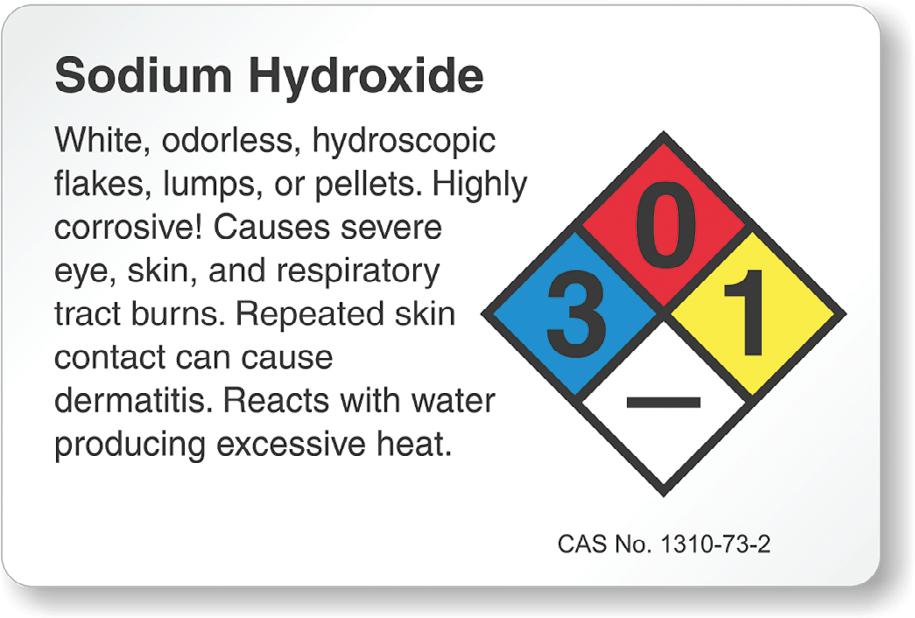
Apparatus
A volumetric flask, such as the one shown in Figure P2, is used to make solutions of known concentration accurately. These solutions are called volumetric (or standard) solutions.
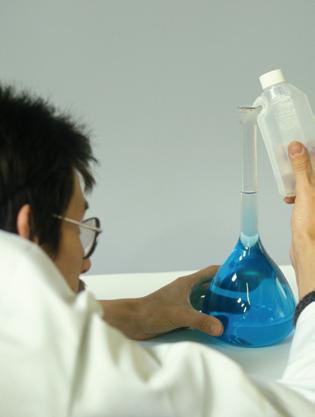
Technique
To prepare a volumetric solution, a known number of moles of solute must be dissolved in deionised water and the solution made up to a known volume. Occasionally other solvents are used.

Preparation involves weighing a small container such as a weighing bottle or boat, and measuring the required mass of compound into it. The number of moles can be calculated from the mass and the relative molecular or formula mass of the compound. The compound needs to be transferred quantitatively, meaning that the compound weighed out is all transferred. This is generally done by putting a small funnel in the neck of a volumetric flask. The compound is tipped or poured in and any remaining in the container is washed in using a wash bottle containing deionised water. It is important to dissolve the compound completely before filling the flask to its graduation mark with water. Typically, the flask is filled to about one-third and the contents swirled until the compound dissolves. More deionised water is added, swirling the flask regularly to ensure thorough mixing, until the solution is about 1 cm below the flask’s graduation mark. Deionised water is then added drop-by-drop until the bottom of the meniscus is just level with the graduation mark, as shown in Figure P3. With the stopper held in place, the flask is repeatedly turned up and down until the solution is thoroughly mixed.
An alternative method is to dissolve the compound in water in a beaker then transfer the solution to the flask. This is better if the compound is difficult to dissolve and may need warming. If it is warmed to dissolve the compound, the solution must be allowed to cool to room temperature before transferring to the volumetric flask.
QUESTIONS











P1. Why can 100 cm3 of a liquid be measured more accurately in a 100 cm3 volumetric flask than in a 100 cm3 measuring cylinder?
P2. Look at the design of a volumetric flask. Why is the graduation mark in the neck of the flask?
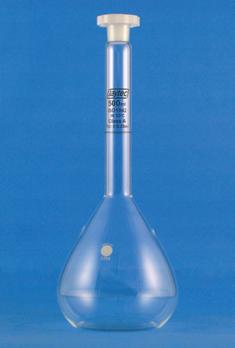

P3. A solid is added to a beaker containing water. The mixture is heated to dissolve the solid. Why must the solution be allowed to cool to room temperature before transferring it to a volumetric flask and making it up to volume?



Finding concentrations and volumes of solutions
Sodium hydroxide reacts with hydrochloric acid in a neutralisation reaction:
NaOHaqHClaqNaClaqHOl ( ) + ( ) → ( ) + ( ) 2
If you add the precise amount of hydrochloric acid required to neutralise the sodium hydroxide, the resulting solution will contain only sodium chloride and water and have pH 7. This procedure is called a titration
If you are given 0100 3 .moldm hydrochloric acid (the standard solution) you can carry out a titration to determine the concentration of a sample of sodium hydroxide solution.
A burette is filled with 0100 3 .moldm hydrochloric acid. 250.cm3 aliquots of the sodium hydroxide solution are titrated against the acid. The volume of acid required to neutralise each aliquot is called a titre. To improve reliability, a minimum of three titres within 01.cm3 are usually obtained and an average titre calculated.
From the sample results in Table 3, you can now calculate the concentration of the sodium hydroxide. Here is the calculation:
25 cm3 of sodium hydroxide solution is neutralised by 1980010033 cmmoldm hydrochloric acid. We now need to calculate the concentration of the alkali.
1980010033 cmmoldm hydrochloric acid contains
1980 1000 0100 . × molHCl
=×198103.molHCl
From the equation
HClaqNaOHaqNaClaqHOl () + () → () + () 2
Titration
Rough123
1molHCl reacts with 1molNaOH
Therefore, there must be 19810 3 × molNaOH in 250.cm3 of the sodium hydroxide solution.
If there are 19810 3 . × molNaOH in 250.cm3 , then the moles in 1 dm3 are:
19810 1000 25 3 ××
= 00792.molNaOH
Therefore, the concentration of sodium hydroxide solution = 00792 3 .moldm
Worked example 19
(MS 0.1, 0.1, 2.1, 2.2, 2.3 and 2.4)
Sodium carbonate is a soluble compound used as washing soda. Calculate the volume of 0100 3 .moldm hydrochloric acid needed to react exactly with 25 cm3 of 0220 3 .moldm sodium carbonate solution.
Step 1 First work out how many moles of sodium carbonate is contained in the solution:
25 cm3 of 0220 3 .moldm sodium carbonate solution contains 0220 25 1000 23 . × molNaCO
=×5510 3 .molNaCO23
Step 2 From the equation
222322 HClaqNaCOaqNaClaqCOgHOl () + () → () + () + ()
1 mol sodium carbonate reacts with 2 mol hydrochloric acid.
Therefore, 5510 3 23 × molNaCO reacts with 2551000110 3 ××=molHClmolHCl
Step 3 To find the volume of 0100 3 .moldm
hydrochloric acid containing 00110.: molHCl
0100.molHCl in 1 dm3 0100 3 .moldm
hydrochloric acid
1molHCl in 10dm3 of 0100 3 .moldm
hydrochloric acid
00110.molHCl in 1000110 3 × ().dm of 0100 3 .moldm hydrochloric acid
==011011033 .dmcm
Therefore, 110 cm3 of 0100 3 .moldm hydrochloric acid is needed to react with 25 cm3 of 0220 3 .moldm sodium carbonate solution.
REQUIRED PRACTICAL ACTIVITY 1: APPARATUS AND TECHNIQUES (PART 2)
(PS 4.1, AT a, d, e, k)



Carry out a simple acid–base titration

This is the second part of the required practical activity ‘Make up a volumetric solution and carry out a simple acid–base titration’. It gives you the opportunity to show that you can:
› use appropriate apparatus to record the volume of liquids
› use laboratory apparatus for a titration, including a burette and pipette
› safely and carefully handle solids and liquids, including corrosive, irritant, flammable and toxic substances.
Apparatus
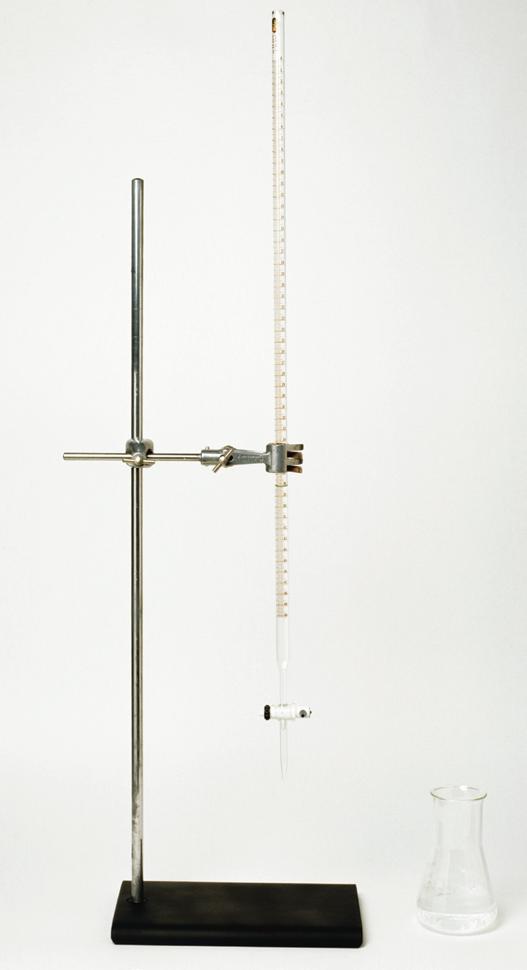
A pipette (Figure P1) is used to transfer an accurately measured volume of liquid. A burette (Figure P2) is used to measure accurately any volume within its capacity.
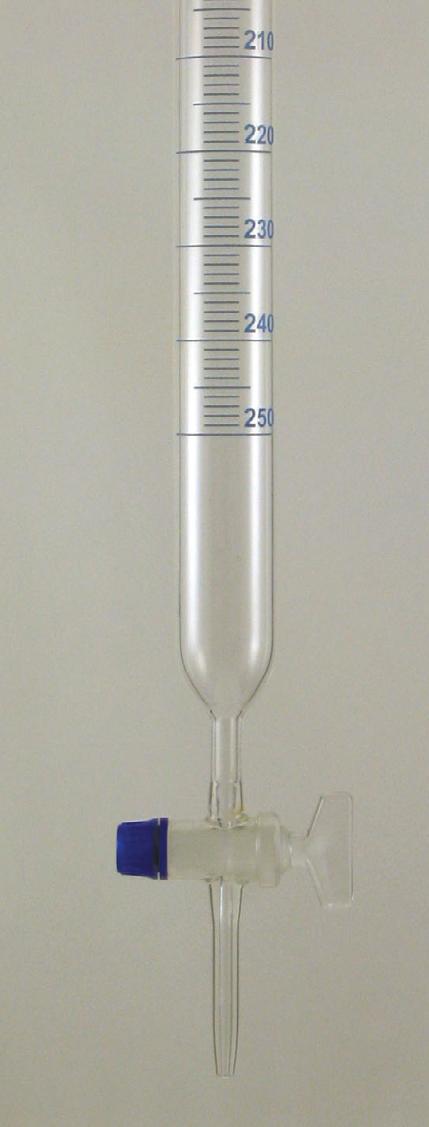
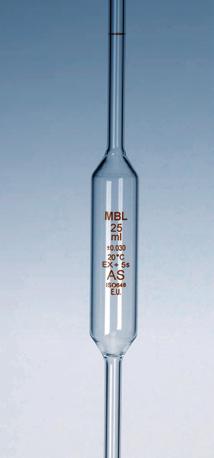
Technique
Using a pipette:







› The pipette must be clean and dry and some of the solution to be analysed should be poured into a clean, dry beaker. This avoids possible contamination of the rest of the solution.



› A safety filler must be used to draw the solution into the pipette. Never suck it up by mouth. The tip of the pipette must be below the surface of the solution being pipetted at all times.
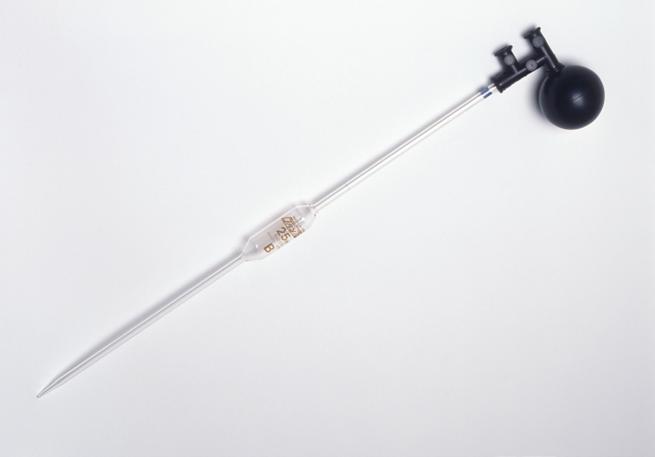
› The solution is drawn up to just above the graduation line, the pipette removed from the solution and the outside of the pipette wiped with a tissue.









› Controlling the release with the safety filler, the solution is drained out until the bottom of the meniscus is level with the graduation line on the pipette. The tip of the pipette is touched on a clean glass surface.
› To empty the solution and run it freely into the conical flask ready for titration, the filler is removed. When the solution has emptied, touch the tip of the pipette on the surface of the solution in the flask. The pipette is designed to deliver a known volume of solution and leave a small amount in its tip, so it is important not to blow out any solution remaining in the pipette.
Using a burette:
› The burette must be clean and dry and clamped vertically. Before use it should be rinsed with three lots of about to of the volumetric solution.
› The volumetric solution is poured in through a funnel until it is 3 cm to 4 cm above the zero graduation.
 Figure P1 Like a volumetric flask, a pipette is calibrated at a fixed temperature (usually 2 ) and has a tolerance, for example 25 ± 0.06cm3
Figure P1 Like a volumetric flask, a pipette is calibrated at a fixed temperature (usually 2 ) and has a tolerance, for example 25 ± 0.06cm3
4.0 cm3




5.0 cm3
this is the meniscus; the reading is 4.7 cm3
Figure P3 A burette has graduation lines for each 1 cm3 quantity. Each 1 cm3 is subdivided into 0.1 cm3 sections. Read the burette with your eye level with the bottom of the meniscus.
› The solution is run out, making sure that there is no trapped air bubble below the tap, until the bottom of the meniscus is just level with the 000 3 c 0 m mark. If it falls below this mark it does not matter, but the burette reading must be recorded.
› To record a burette reading your eye should be level with the meniscus and the reading taken at the bottom of the meniscus (Figure P3). A piece of white card held behind it can make the meniscus easier to see.




















Carrying out a titration:
› The volumetric solution is added from a burette in 1–2 cm3 amounts, swirling the flask between additions. As the end point gets closer, the colour takes longer to change.
› The burette reading is recorded when the colour change is permanent (does not disappear when the flask is swirled). It does not matter if a little too much is added. This is a ‘rough’ titration.
› The titration is repeated, but this time the volumetric solution is added 1–2 cm3 at a time, swirling the contents of the flask thoroughly after each addition, until it is within 2–3 cm3 of the ‘rough’ titration. At this point the solution is added drop by drop until the end point is reached. This should be repeated until three concordant results are obtained.
QUESTIONS


P1. Which apparatus will measure 20 cm3 with greater precision: a 20 cm3 pipette or a 50 cm3 burette?
P2. Explain why a ‘rough titration’ is carried out and why its value is usually ignored when taking an average of the repeated titration values.
Stretch and challenge
P3. You will often find that a 50 cm3 burette is used for titrations and the concentration of the volumetric solution for routine analyses of similar samples is adjusted so that each titre is between 20 cm3 and 25 cm3. Why do you think this is?
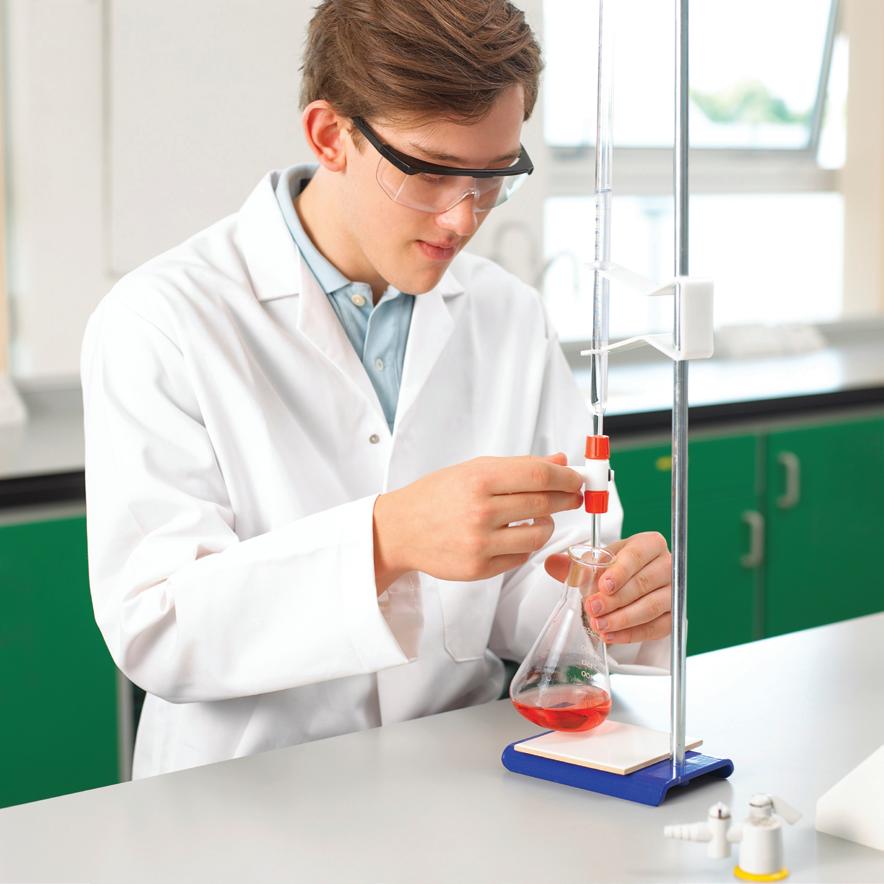 Figure P4 Carrying out a titration accurately requires care and practice.
Figure P4 Carrying out a titration accurately requires care and practice.
ASSIGNMENT 3: HOW ACCURATE ARE YOUR TITRATION RESULTS?
(MS 1.1, 1.2, 1.3; PS 2.1, 2.3, 4.1)
There are two sources of error in a titration experiment.
› Procedural errors: errors due to the way the experiment was carried out. These are errors that can be avoided with care and practice.
› Apparatus errors: errors due to the limitations of precision of the apparatus used. These limitations are due to the manufacturing of the apparatus and are usually printed on the side of glassware.
A top-pan balance may measure mass in grams to two decimal places (to the nearest 0.01 g). The second decimal place is an approximation of the third decimal place. So, a reading of 2.56 g may be anything between 2.555 g and 2.564 g. This means that the second decimal place is uncertain and has an error of ±0 005 g.
A 250 cm3 volumetric flask has an error of ± 025 3 c 2 m (Figure A1).
A 25 cm3 pipette has an error of ± 006 3 c 0 m .
One drop from a burette has a volume of 005 3 c 0 m This is why all burette readings should include two decimal places and the second place should be 0 or 5.
Since measuring a volume from a burette involves two readings, the error on a volume measured from a burette is ± = ± 20 × 05 010 3 . 0 cm .
Errors are often written as percentage errors: percentage error =
Questions
A1. Calculate the percentage error:
a. on a 250 cm3 volumetric flask
b. on a 25 cm3 pipette
c. on a burette reading of 24.00 cm3
d. on a balance reading of 55.60 g
e. on a balance reading of 5.56 g
A2. Which has the bigger percentage error, a larger or smaller balance reading?
apparatuss precision
e ’ rro r r due to limitationofthe apparatus reading taken k usingthe × 100%
For example, to calculate the percentage error on a balance reading of 3.69 g:
% error =× 00 . 5 369 100
= 136.% 3
A3. The overall percentage error for an experiment can be found by adding together all the percentage errors for the apparatus used. What is the overall percentage error for using a burette and a 25 cm3 pipette to carry out a titration?
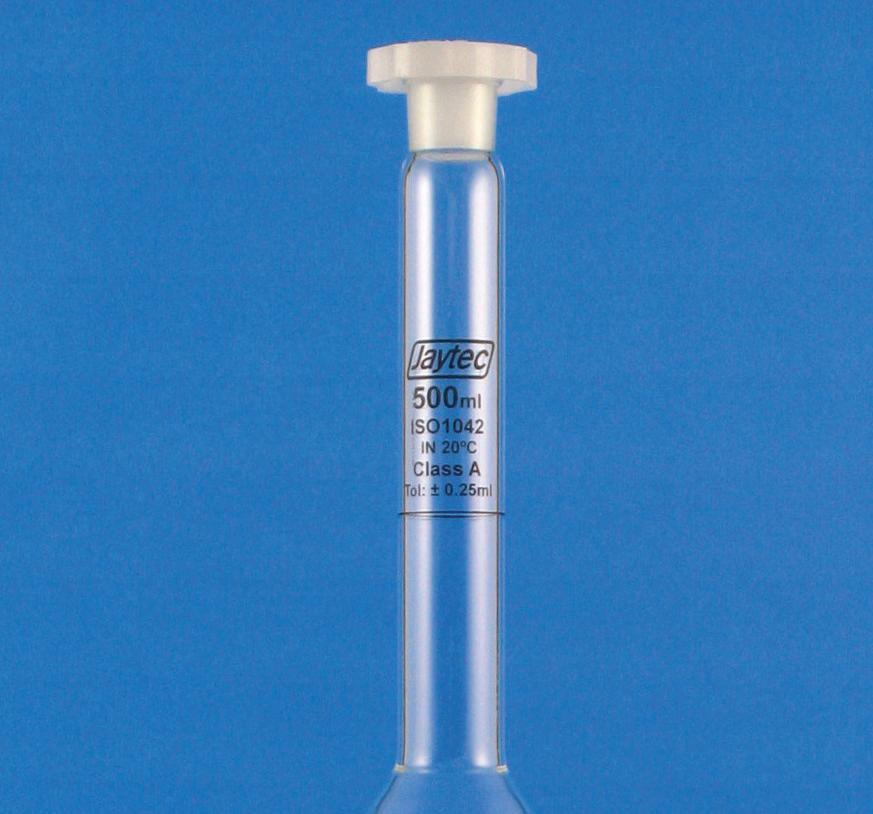
ASSIGNMENT 4: HOW MUCH ASPIRIN IS IN AN ASPIRIN TABLET?

The aspirin solution was titrated against 100 3 .mol dm sodium hydroxide, using phenolphthalein as the indicator.
The rough titre is an outlier (a measurement that lies outside the range of the others).
Questions
From the results in Table A2, calculate the average titre.
Figure A1 Extracts from willow and similar plants have been used to reduce fever for hundreds of years. In the mid-nineteenth century, scientists started experimenting with the active ingredient in willow to find a related substitute. Today we use acetylsalicylic acid in aspirin tablets.
Not all of an aspirin tablet is aspirin (Figure A1). It contains other ingredients. The ingredients list for a medicine tablet may include, amongst other substances, corn starch, cellulose and binders.
The active ingredient in an aspirin tablet is acetylsalicylic acid. The fact that it is an acid allows us to carry out an acid–base titration to find out how much is in the tablet.
The formula for acetylsalicylic acid is CH COOC 36HCOOH 4 .
The acid–base titration reaction is: CH COOC HCOOH +NaOH 36 4 → CH COOC HCOONa+ HO 36 42 C H A student carried out the following practical.
The tablet was ground up and added to a conical flask. It was then dissolved in 10 0 3.cm ethanol (this is because aspirin does not dissolve in water easily).
KEY IDEAS
› Concentration is measured in mol dm 3
Table A2 Results of an acid–base titration to find the mass of aspirin in a tablet
A2. How many moles of sodium hydroxide were used to neutralise the aspirin?
A3. From the reaction equation, how many moles of sodium hydroxide react with one mole of acetylsalicylic acid?
A4. How many moles of acetylsalicylic acid reacted with the sodium hydroxide in the titration?
A5. Calculate the relative molecuar mass, Mr, of acetylsalicylic acid.
A6. What is the mass of acetylsalicylic acid in the aspirin tablet? Note: decide on a suitable number of significant figures for your answer.
A7. Calculate the percentage errors for each apparatus used and an overall percentage error.
› Concentration molesofsolute volume () mol dm = of o solution () dm3
› A volumetric solution is one in which the concentration is known.
› A titration is used to find an unknown volume or concentration of a reactant.
PRACTICE QUESTIONS
1. The metal lead reacts with warm dilute nitric acid to produce lead(II) nitrate, nitrogen monoxide and water, according to the following equation:
3Pb + 8HNO3 () s () aq →
3Pb + 2NO + 4H O 2 2 () NO3 () aq () g () I(
a. In an experiment, an 8.14 g sample of lead reacted completely with a 2.00 mol dm 3 solution of nitric acid. Calculate the volume, in dm3, of nitric acid required for the complete reaction. Give your answer to 3 significant figures.
b. In a second experiment, the nitrogen monoxide gas produced in the reaction occupied 638 cm3 at 101 kPa and 298 K. Calculate the amount, in moles, of NO gas produced. (The gas constant
R = 8.31 J K 1 mol 1)
c. When lead(II) nitrate is heated it decomposes to form lead(II) oxide, nitrogen dioxide and oxygen.
i. Balance the following equation that shows this thermal decomposition.
Pb ......PbO + 2() NO3 () s → () s NO22 2 + O () g () g
ii. Suggest one reason why the yield of nitrogen dioxide formed during this reaction is often less than expected.
iii. Suggest one reason why it is difficult to obtain a pure sample of nitrogen dioxide from this reaction.
AQAJan2012Unit1Q6
2. Norgessaltpeter was the first nitrogen fertiliser to be manufactured in Norway. It has the formula Ca 2() NO3
a. Norgessaltpeter can be made by the reaction of calcium carbonate with dilute nitric acid as shown by the following equation:
CaCO + 2HNO 33 () s () aq →
Ca +CO +H O 2 22 () NO3 () aq () g () I(
In an experiment, an excess of powdered calcium carbonate was added to 36.2 cm3 of 0.586 mol dm 3 nitric acid.
i. Calculate the amount, in moles, of HNO3 in 36.2 cm3 of 0.586 mol dm 3 nitric acid. Give your answer to 3 significant figures.
ii. Calculate the amount, in moles, of CaCO3 that reacted with the nitric acid. Give your answer to 3 significant figures.
iii. Calculate the minimum mass of powdered CaCO3 that should be added to react with all of the nitric acid. Give your answer to 3 significant figures.
iv. State the type of reaction that occurs when calcium carbonate reacts with nitric acid.
b. Norgessaltpeter decomposes on heating as shown by the following equation: 2Ca 2CaO + 4NO +O 2 22 () NO3 () s → () s () g () g A sample of Norgessaltpeter was decomposed completely. The gases produced occupied a volume of 3.50×10 3 m3 at a pressure of 100 kPa and a temperature of 31°C. (The gas constant R = 8.31 J K 1 mol 1)
i. Calculate the total amount, in moles, of gases produced.
ii. Hence calculate the amount, in moles, of oxygen produced.
c. Hydrated calcium nitrate can be represented by the formula Ca(NO3)2 xH2O where x is an integer. A 6.04 g sample of Ca(NO3)2 xH2O contains 1.84 g of water of crystallisation. Use this information to calculate a value for x Show your working.
AQAJun2011Unit1Q2
3. a. An unknown metal carbonate, M2CO3, reacts with hydrochloric acid according to the following equation:
M2CO3(aq)+2HCl(aq) → 2MCl(aq)+CO2(g)+H2O(l)
A 3.44 g sample of M2CO3 was dissolved in distilled water to make 250 cm3 of solution. A 25.0 cm3 portion of this solution required 33.2 cm3 of 0.150 mol dm 3 hydrochloric acid for complete reaction.
i. Calculate the amount, in moles, of HCl in 33.2 cm3 of 0.150 mol dm 3 hydrochloric acid. Give your answer to 3 significant figures.
ii. Calculate the amount, in moles, of M2CO3 that reacted with this amount of HCl. Give your answer to 3 significant figures.
iii. Calculate the amount, in moles, of M2CO3 in the 3.4 g sample. Give your answer to 3 significant figures.
iv. Calculate the relative formula mass, Mr, of M2CO3. Give your answer to 1 decimal place.
v. Hence determine the relative atomic mass, Ar, of the metal M and deduce its identity.
b. In another experiment, 0.658 mol of CO2 was produced. This gas occupied a volume of 0.0220 m3 at a pressure of 100 kPa. Calculate the temperature of this CO2 and state the units. (The gas constant R = 8.31 J K 1 mol 1)
c. Suggest one possible danger when a metal carbonate is reacted with an acid in a sealed flask.
d. In a different experiment, 6.27 g of magnesium carbonate was added to an excess of sulfuric acid. The following reaction occurred:
MgCO3+H2SO4 → MgSO4+CO2+H2O
i. Calculate the amount, in moles, of MgCO3 in 6.27 g of magnesium carbonate.
ii. Calculate the mass of MgSO4 produced in this reaction assuming a 95% yield.
AQAJan2011Unit1Q3
4. In this question give all your answers to 3 significant figures.
Magnesium nitrate decomposes on heating to form magnesium oxide, nitrogen dioxide and oxygen, as shown in the following equation:
2Mg(NO3)2(s) → 2MgO(s)+4NO2(g)+O2(g)
a. Thermal decomposition of a sample of magnesium nitrate produced 0.741 g of magnesium oxide.
i. Calculate the amount, in moles, of MgO in 0.741 g of magnesium oxide.
ii. Calculate the total amount, in moles, of gas produced from this sample of magnesium nitrate.
b. In another experiment, a different sample of magnesium nitrate decomposed to produce 0.402 mol of gas. Calculate the volume, in dm3, that this gas would occupy at 333 K and 1.00×105 Pa. (The gas constant R = 8.31 J K 1 mol 1)
c. A 0.0152 mol sample of magnesium oxide, produced from the decomposition of magnesium nitrate, was reacted with hydrochloric acid. The equation for the reaction is:
MgO+2HCl → MgCl2+H2O
i. Calculate the amount, in moles, of HCl needed to react completely with the 0.0152 mol sample of magnesium oxide.
ii. This 0.0152 mol sample of magnesium oxide required 32.4 cm3 of hydrochloric acid for complete reaction. Use this information and your answer to part c) i) to calculate the concentration, in mol dm 3, of the hydrochloric acid.
AQAJun2010Unit1Q3
5. a. An acid, H2X, reacts with sodium hydroxide as shown in the following equation:
H2X(aq)+2NaOH(aq) → 2Na+(aq)+X2–(aq)+2H2O(l)
A solution of this acid was prepared by dissolving 1.92 g of H2X in water and making the volume up to 250 cm3 in a volumetric flask.
A 25.0 cm3 sample of this solution required 21.70 cm3 of 0.150 mol dm–3 aqueous NaOH for complete reaction.
i. Calculate the number of moles of NaOH in 21.70 cm3 of 0.150 mol dm–3 aqueous NaOH.
ii. Calculate the number of moles of H2X that reacted with this amount of NaOH. Hence, deduce the number of moles of H2X in the 1.92 g sample.
iii. Calculate the relative molecular mass, Mr, of H2X.
b. Analysis of a compound, Y, showed that it contained 49.31% of carbon, 6.85% of hydrogen and 43.84% of oxygen by mass. (The Mr of Y is 146.0)
i. State what is meant by the term empiricalformula
ii. Use the above data to calculate the empirical formula and the molecular formula of Y.
c. Sodium hydrogencarbonate decomposes on heating as shown in the equation below:
2NaHCO3(s) → Na2CO3(s)+CO2(g)+H2O(g)
A sample of NaHCO3 was heated until completely decomposed. The CO2 formed in the reaction occupied a volume of 352 cm3 at 1.00 × 105 Pa and 298 K.
i. State the ideal gas equation and use it to calculate the number of moles of CO2 formed in this decomposition. (The gas constant R = 8.31 J K–1 mol–1)
ii. Use your answer from part c) i) to calculate the mass of the NaHCO3 that has decomposed. (If you have been unable to calculate the number of moles of CO2 in part c) i), you should assume this to be 0.0230 mol. This is not the correct value.)
6. Nitroglycerine, C3H5N3O9, is an explosive that, on detonation, decomposes rapidly to form a large number of gaseous molecules. The equation for this decomposition is: 4C3H5N3O9(l) → 12CO2(g)+10H2O(g)+6N2(g)+O2(g)
a. A sample of nitroglycerine was detonated and produced 0.350 g of oxygen gas.
i. State what is meant by the term one mole of molecules.
ii. Calculate the number of moles of oxygen gas produced in this reaction, and hence deduce the total number of moles of gas formed.
iii. Calculate the number of moles, and the mass, of nitroglycerine detonated.
b. A second sample of nitroglycerine was placed in a strong sealed container and
detonated. The volume of this container was 1.00×10–3 m3. The resulting decomposition produced a total of 0.873 mol of gaseous products at a temperature of 1100 K. State the ideal gas equation and use it to calculate the pressure in the container after detonation. (The gas constant R = 8.31 J K–1 mol–1)
7. Magnesium chloride is also know as E511 and is used in the preparation of tofu. Magnesium chloride can be prepared in the lab using the reaction:.
MgCO3(s)+2HCl(aq) → MgCl2(aq)+H2O(l)+CO2(g)
a. What is the maximum yield of magnesium chloride that can be obtained from 8.4 g magnesium carbonate?
b. If the actual yield is 6.3 g, what is the percentage yield?
c. State one reason why the percentage yield is less than 100%.
d. What is the percentage atom ecomony for the reaction?
e. Give one advantage of using a reaction with a high atom ecomony in the chemical industry?
8. Students were determining the concentration of a sample of hydrochloric acid by titrating it against 0.100 mol dm−3 sodium hydroxide solution.
a. A pipette was used to transfer 25 cm3 sodium hydroxide solution into a conical flask. Explain how the students could use phenolphthalein indicator and a burette to carry out the titration.
b. State the changes that they would need to make in the procedure if they used a pH probe instead of an indicator. Table Q1 shows their results using phenolphthalein indicator.
c. Calculate the titres for each titration and select the three best results to calculate an average titre.
d. Calculate the following:
i. the number of moles of 0.100 mol dm−3 sodium hydroxide in 25 cm3 solution
ii. the number of moles of hydrochloric acid that this reacted with.
iii. concentration of the hydrochloric acid to the appropriate number of significant figures.
e. The error on a burette reading is ±0.05 cm3. What is the error on a titre?
Table Q1
10.Which of A–D is the number of atoms in one mole of atoms?
A 6.023×10
B 6.023×10−23
C 6.023×1010
D 6.023×1023
11. Which of A–D is the correct ideal gas equation?
A nR = pVT
B pV = nRT
C nV = pRT
D pT = nRV
12. Which of A–D represents the empirical formula of glucose, C6H12O6?
A CH2O
B C6H12O6
C CHO
D CHO2
Stretch and challenge
13. The acid in vinegar is ethanoic acid (its old-fashioned name was acetic acid). The concentration of ethanoic acid in vinegar can be determined by titration. Ethanoic acid reacts with sodium hydroxide to produce sodium ethanoate and water:
CH COOH aq +NaOHaq 3 ( ) ( )
CHCOONaaq+HO l H3 2 ( ) ( )
The graph in Figure Q1 shows the changes in pH when vinegar was titrated against sodium hydroxide solution.
Multiple Choice
9. For which of the compounds A–D is relative formula mass used?
A sodium chloride
B water
C carbon dioxide
D glucose
Figure Q1 pH titration curve of weak acid (CH3COOH) and strong base (NaOH)
a. Assuming the pH of sodium ethanoate solution is 7, what volume of sodium hydroxide is needed to neutralise the vinegar?
b. What is present in the reaction mixture when:
i. 10 cm3 sodium hydroxide solution has been added
ii. 35 cm3 sodium hydroxide solution has been added?
c. Explain the changes in pH as the titration proceeds.
d. A different brand of vinegar, X, was similarly tested. This brand was found to contain a higher concentration of ethanoic acid. Copy the pH titration curve in Figure Q1 and add a second curve to show the changes in pH when vinegar X was titrated against the same concentration of sodium hydroxide solution. Label the second curve ‘Vinegar X’.





